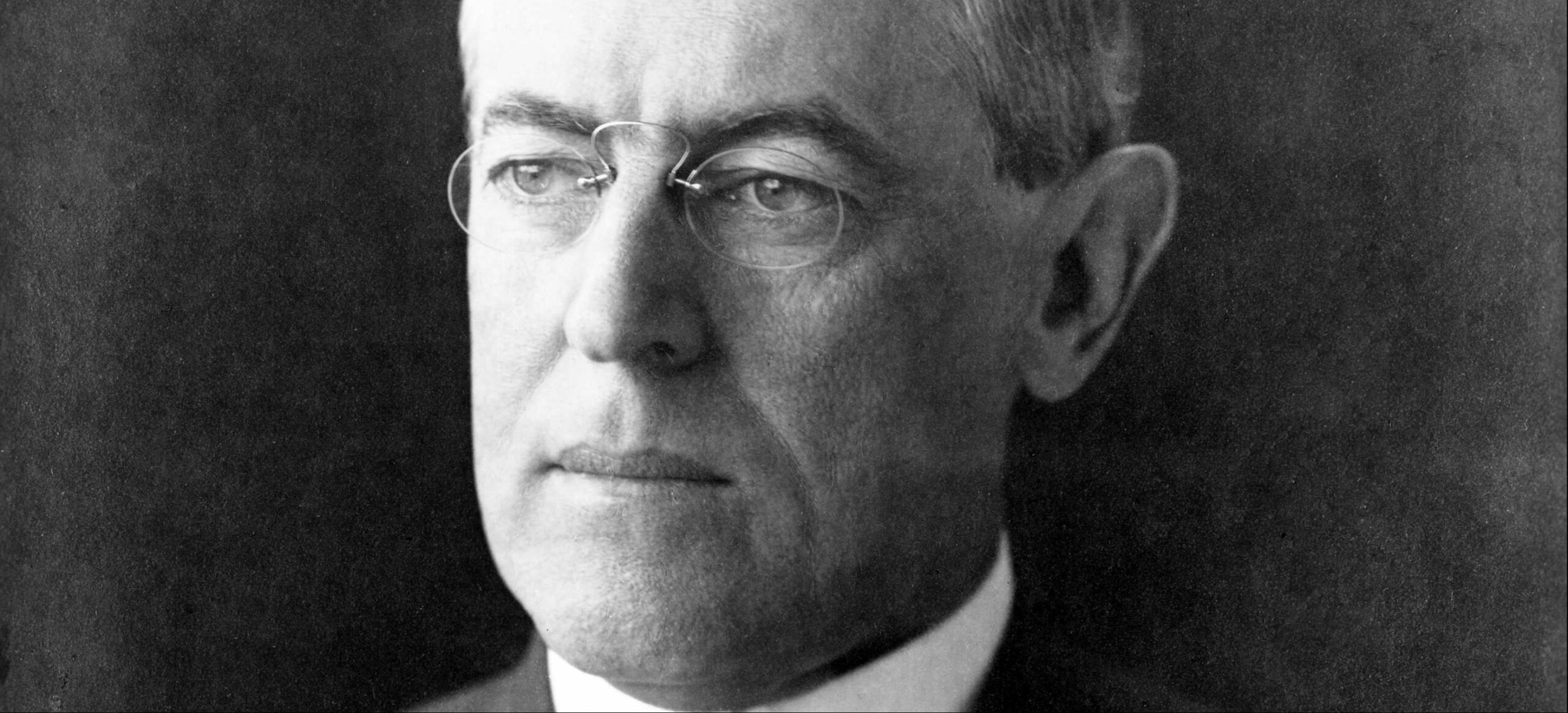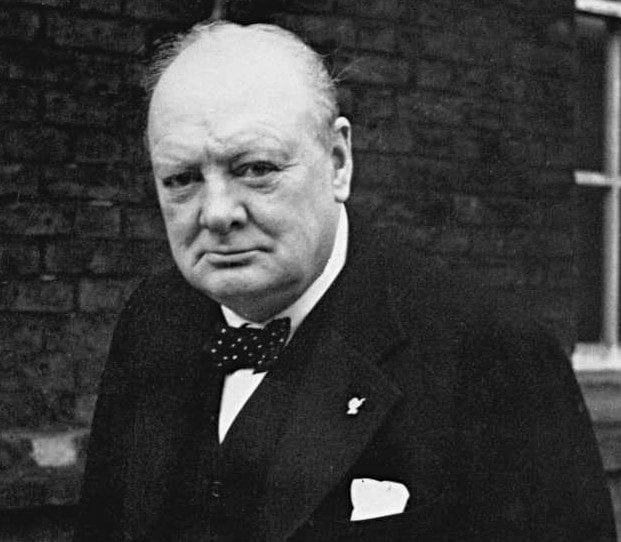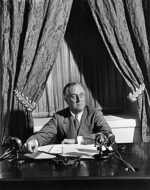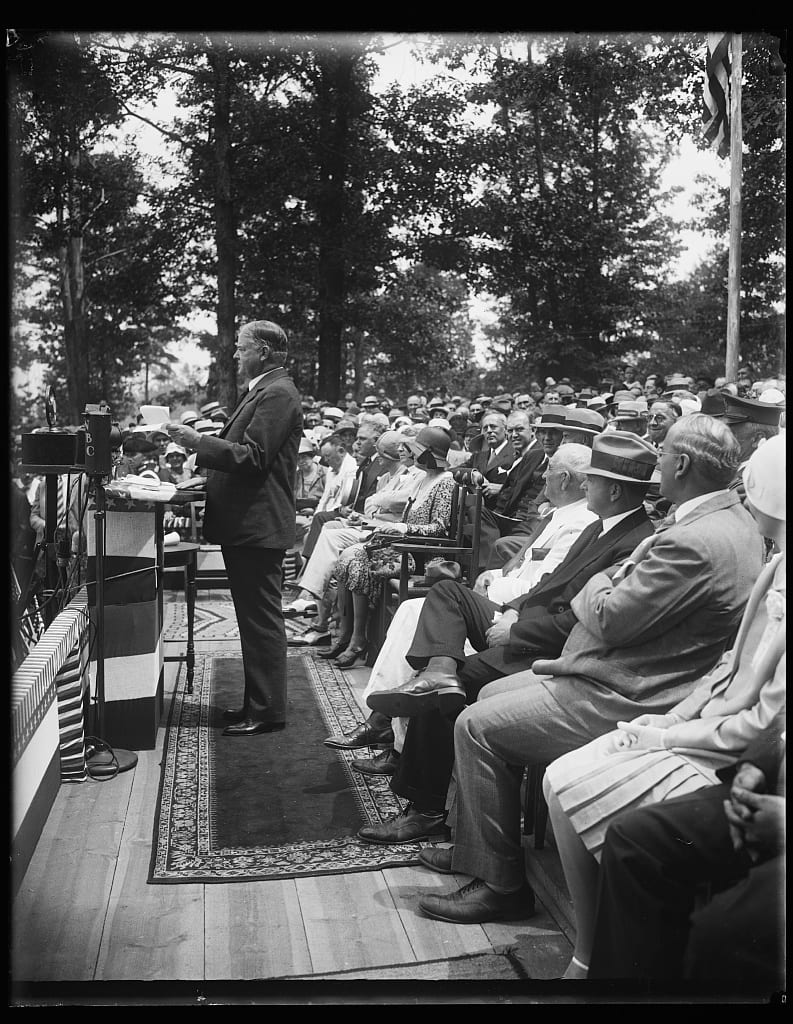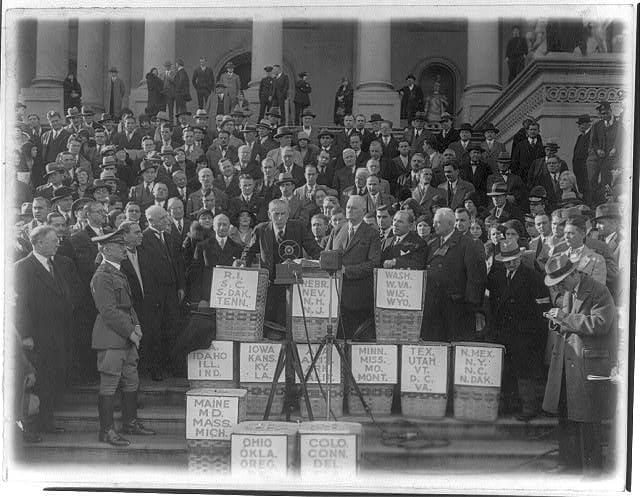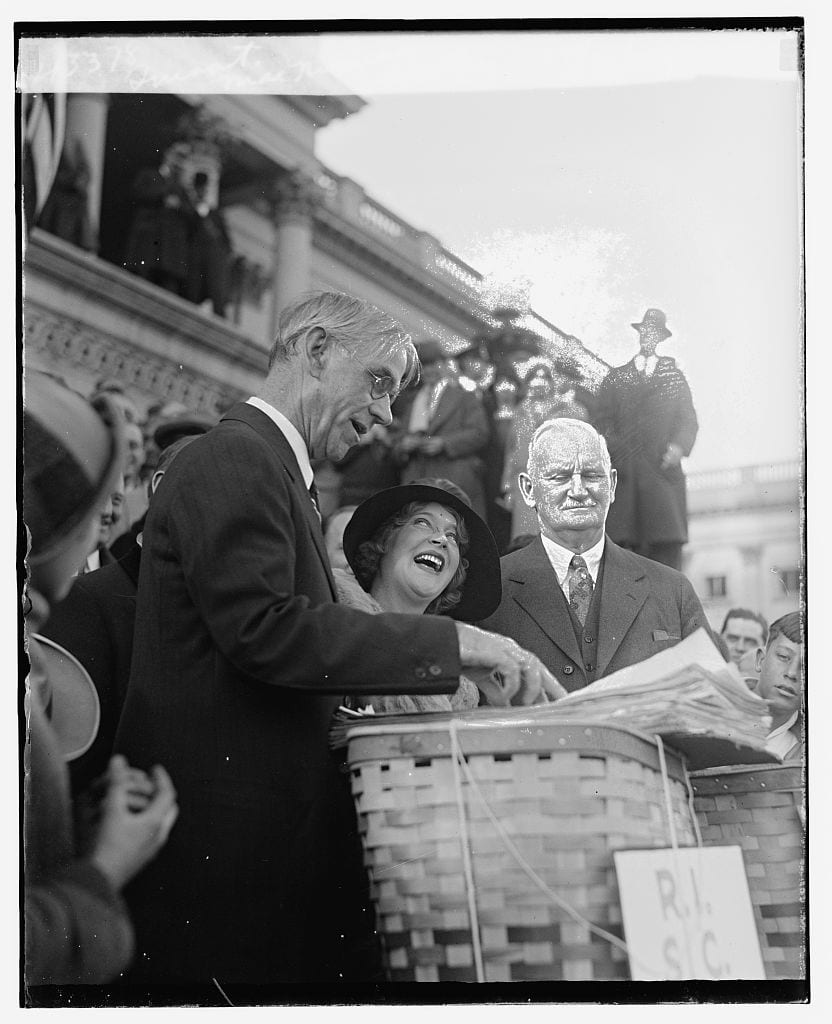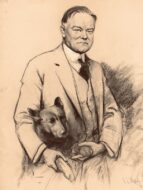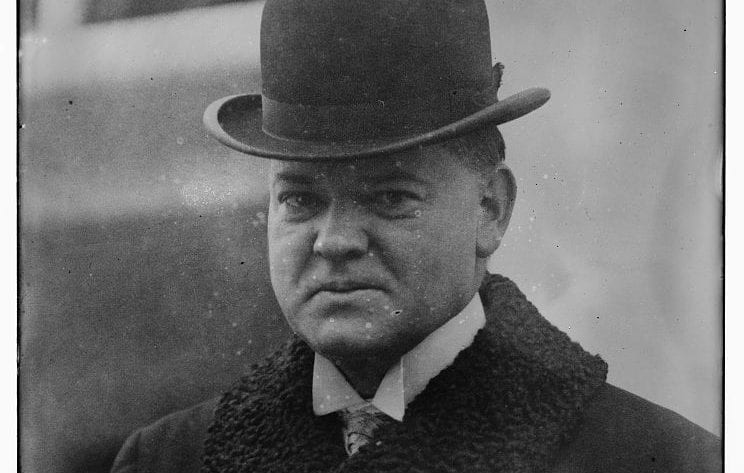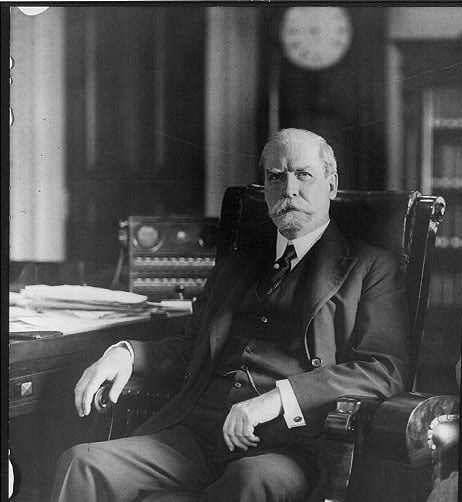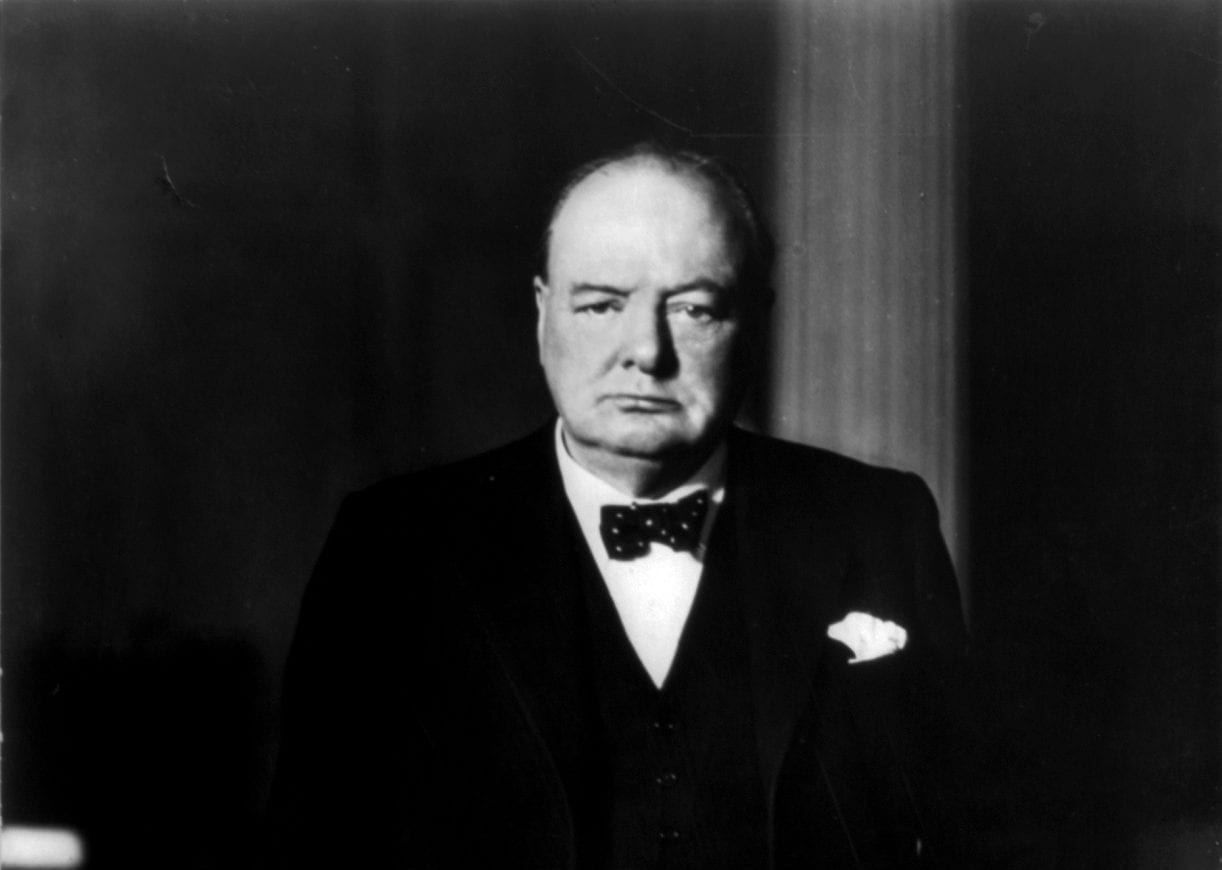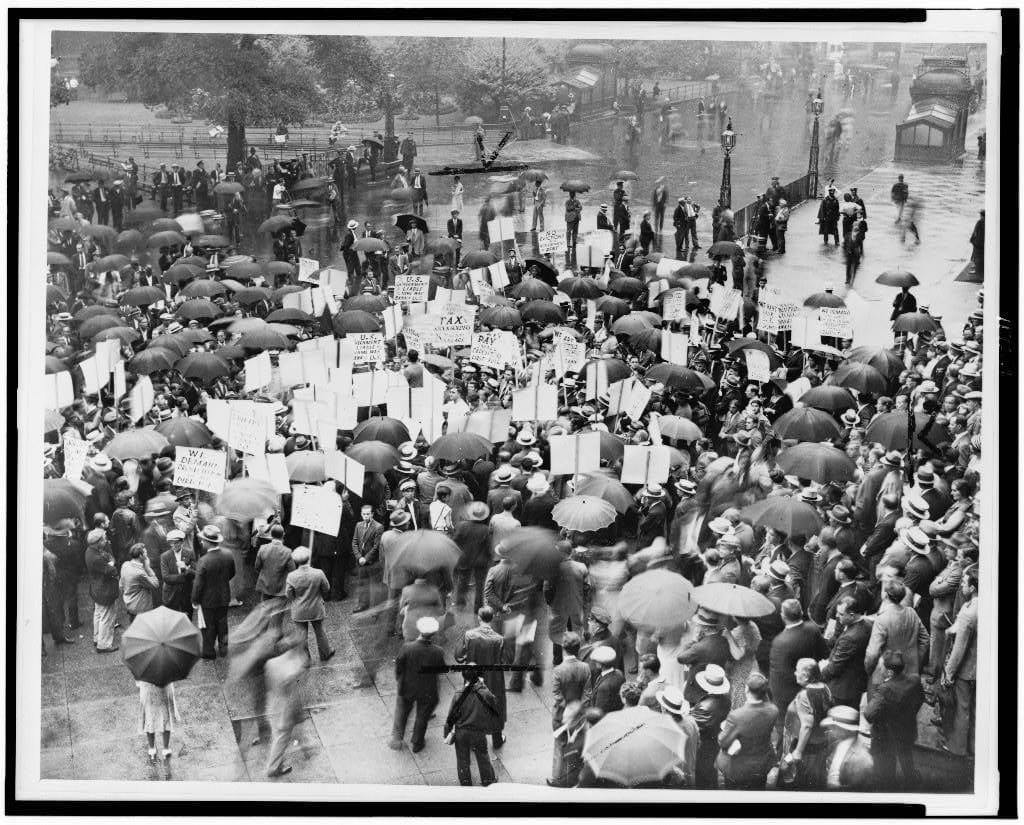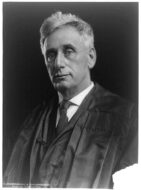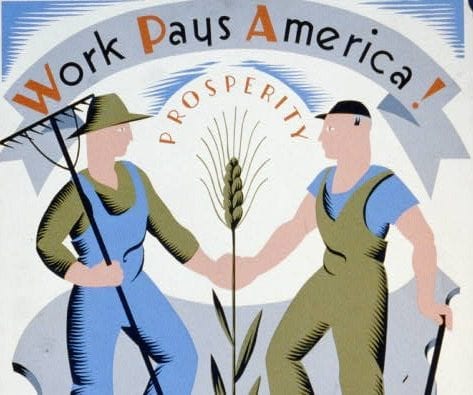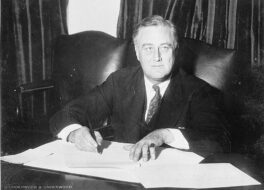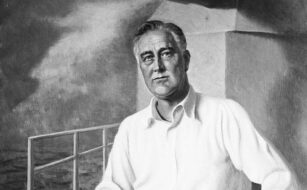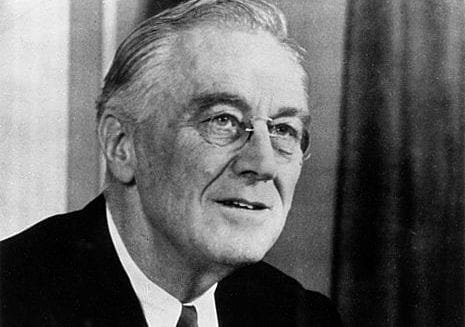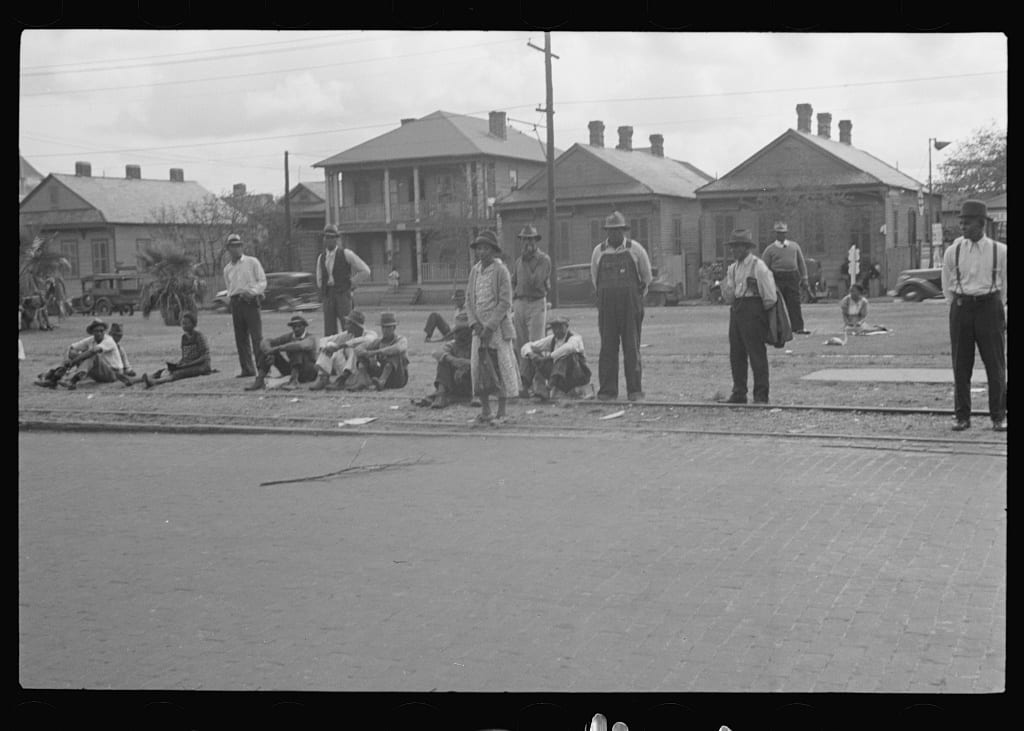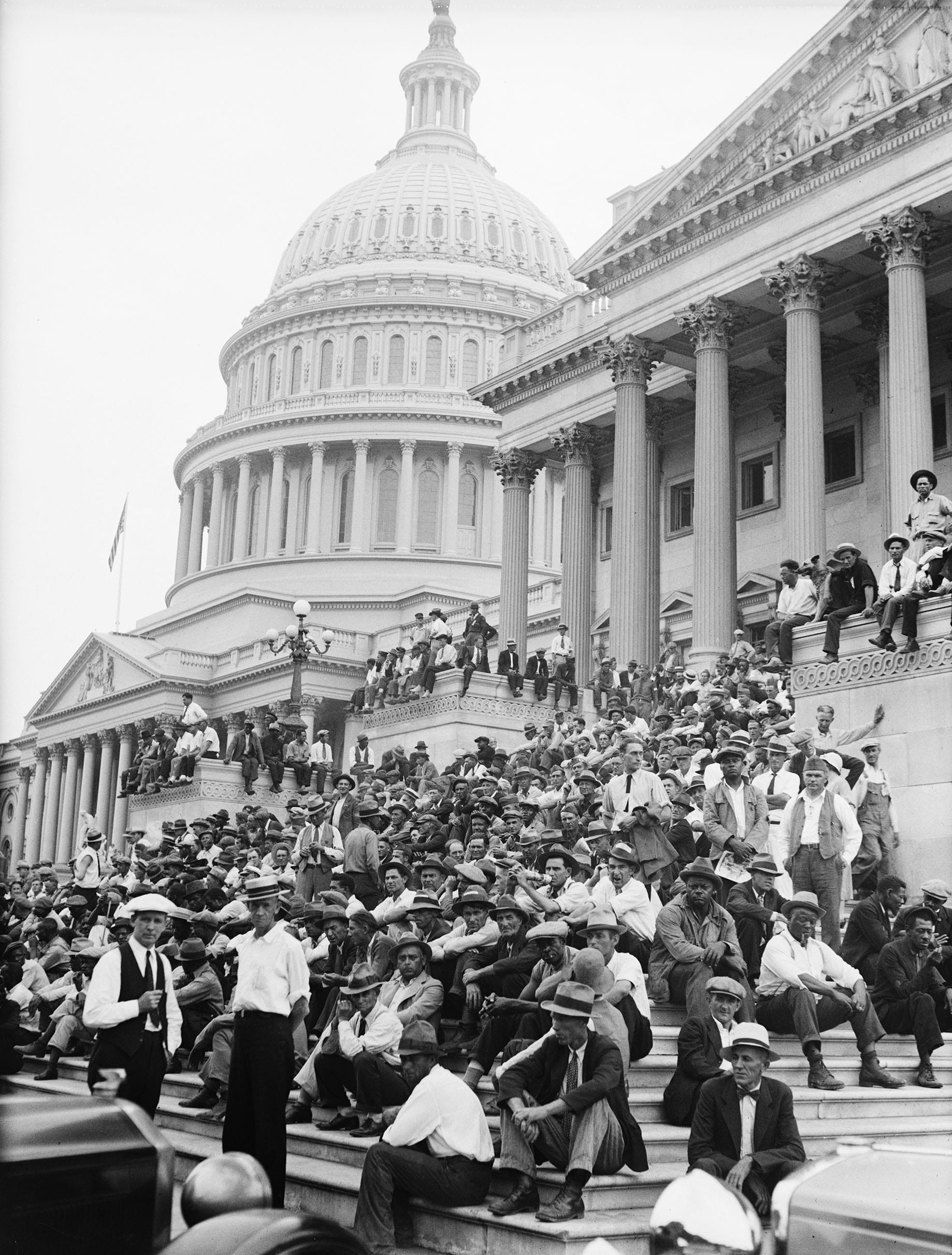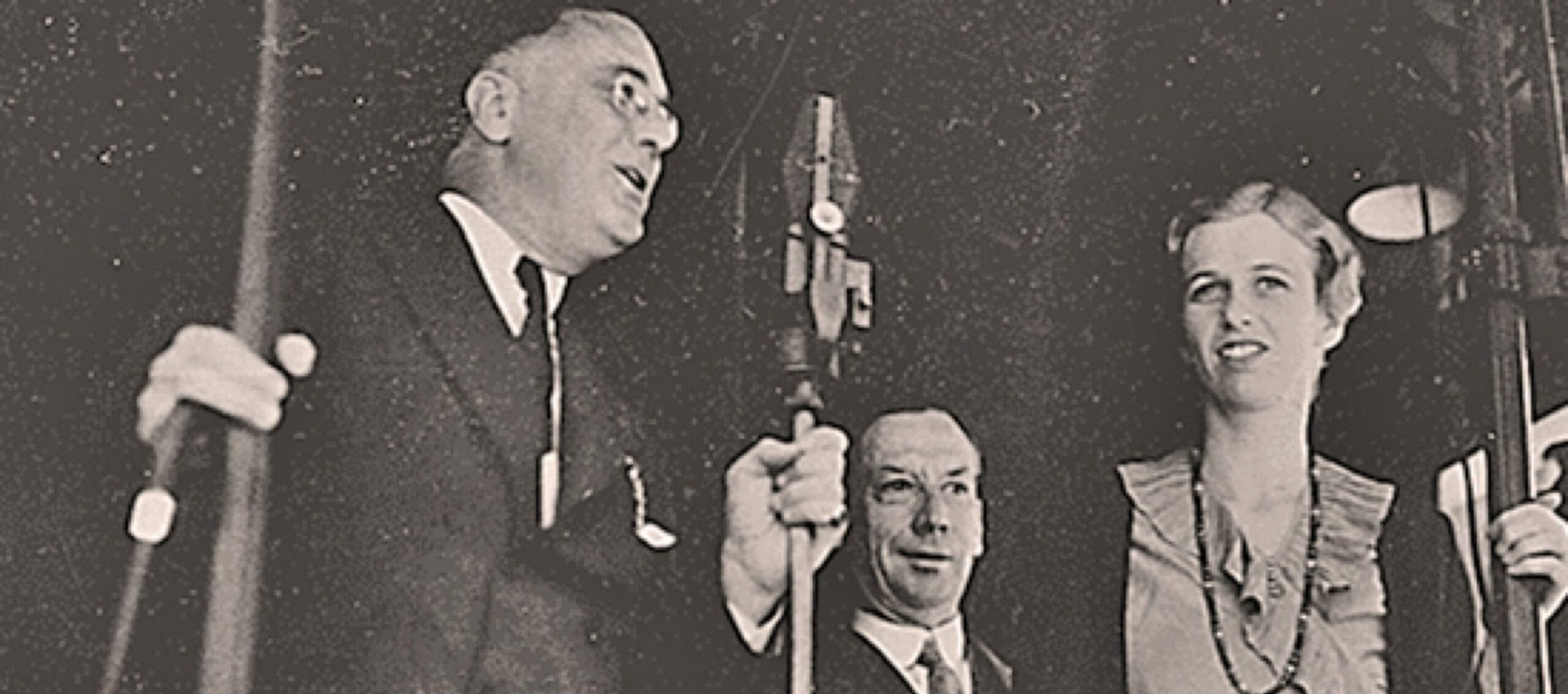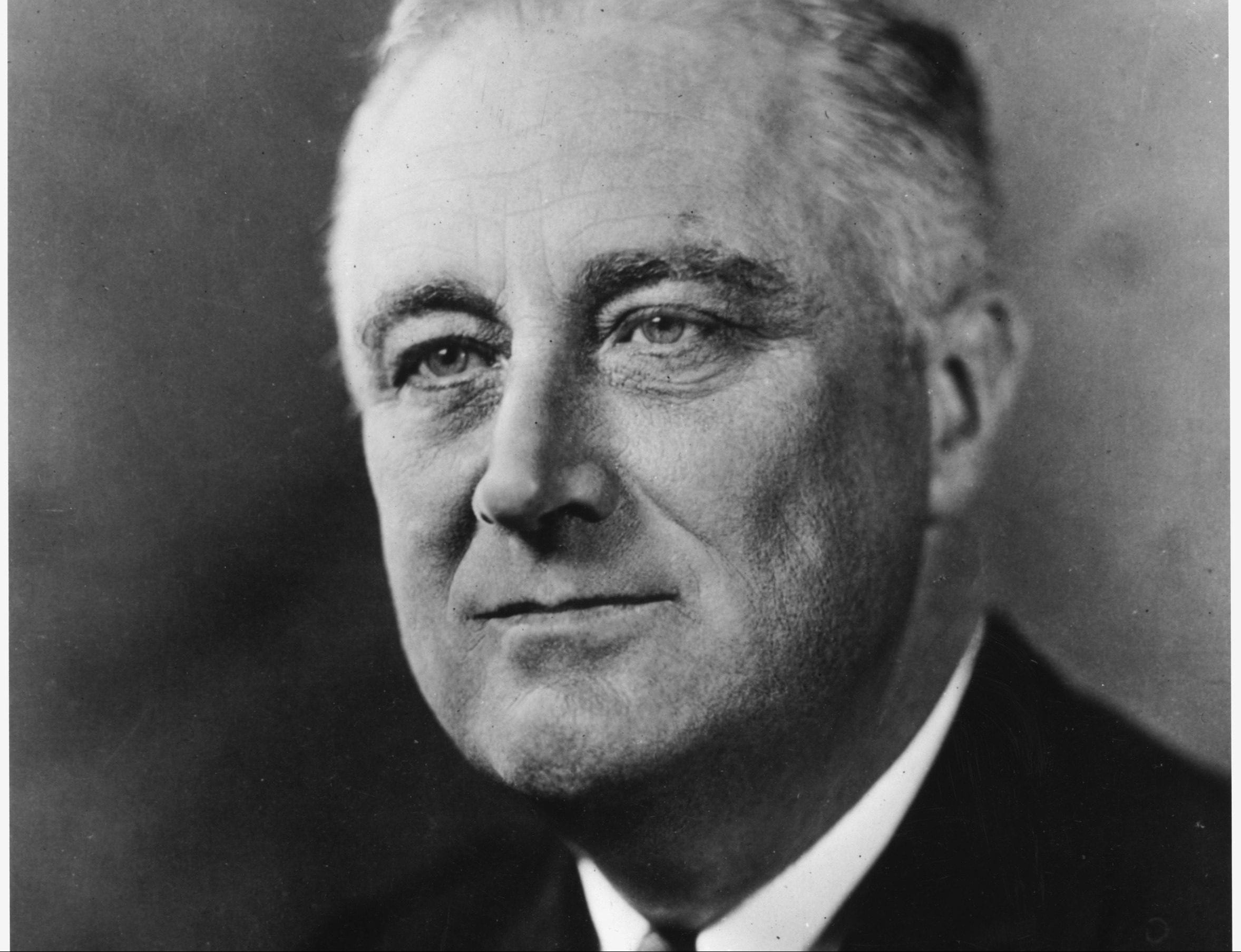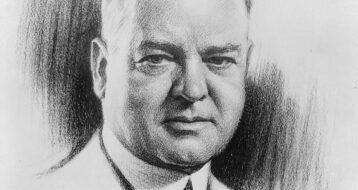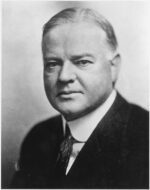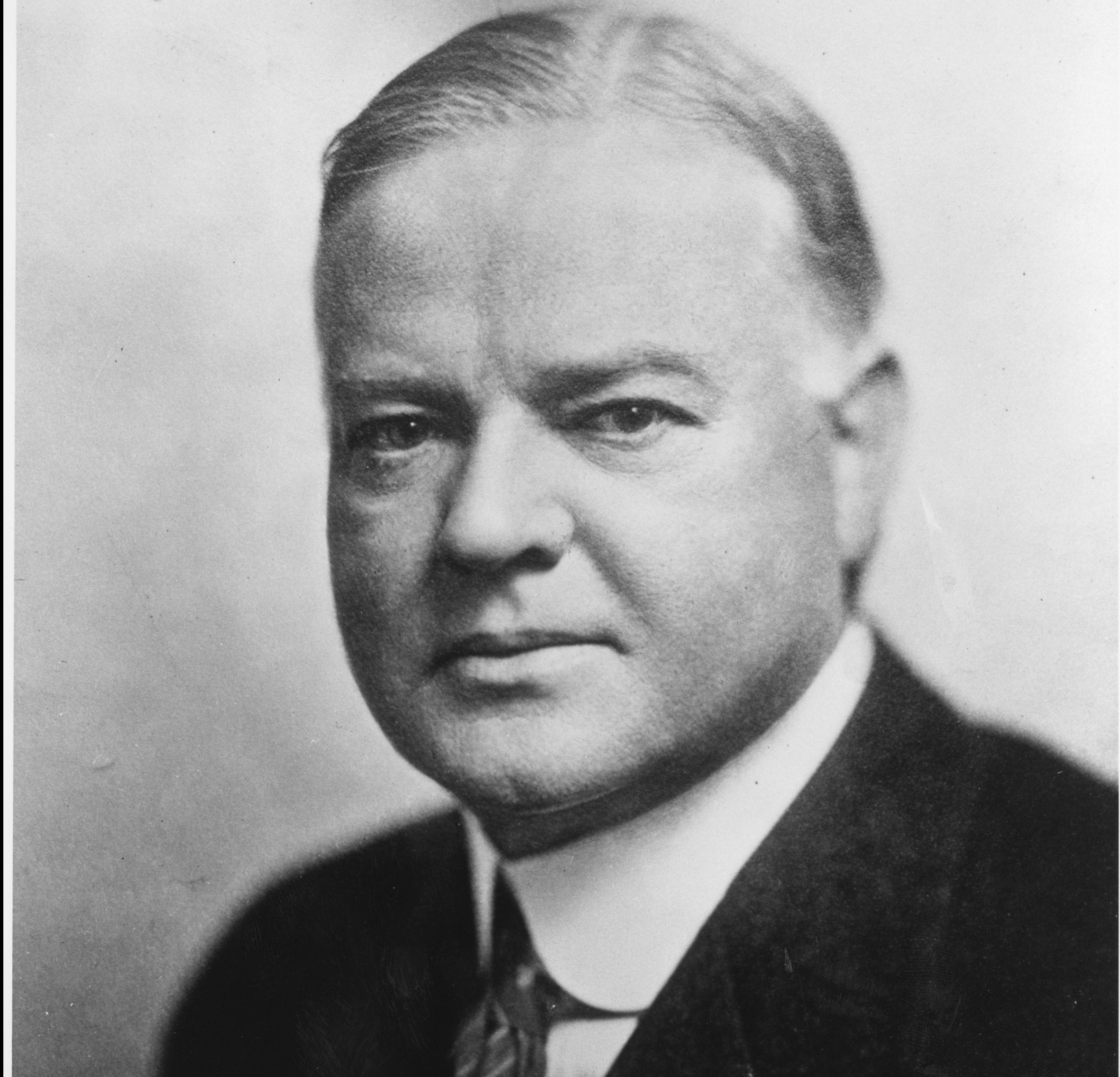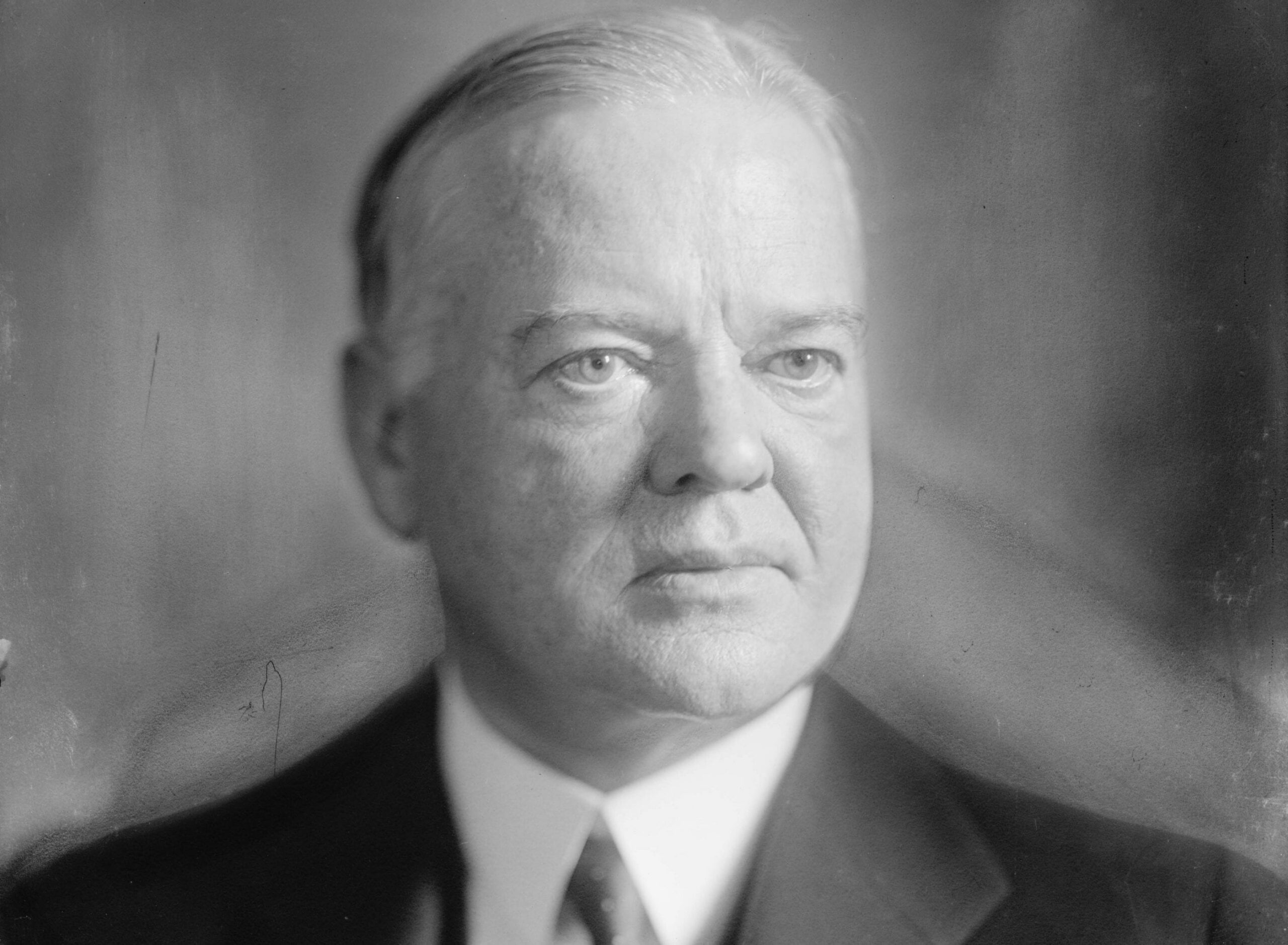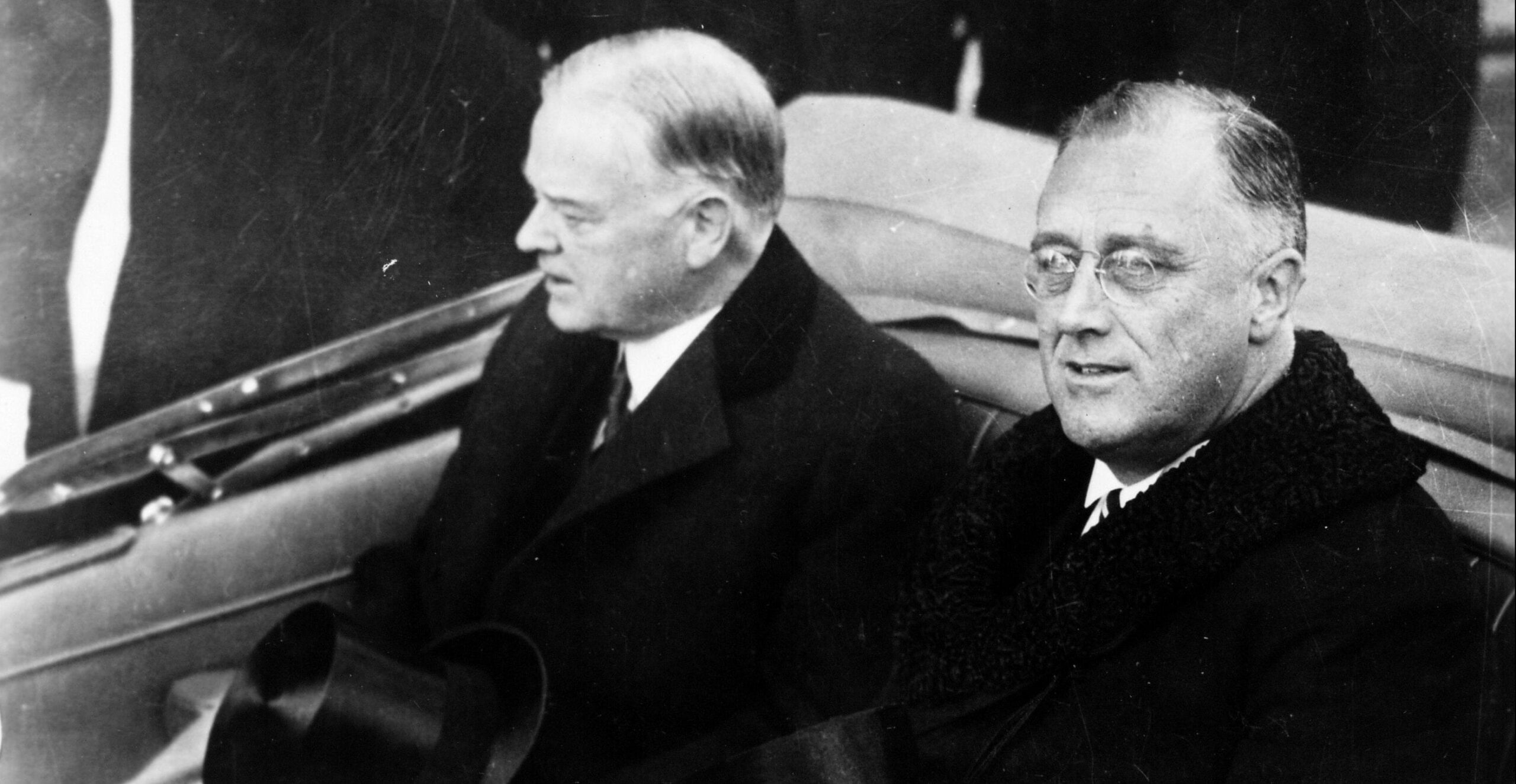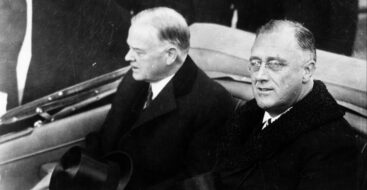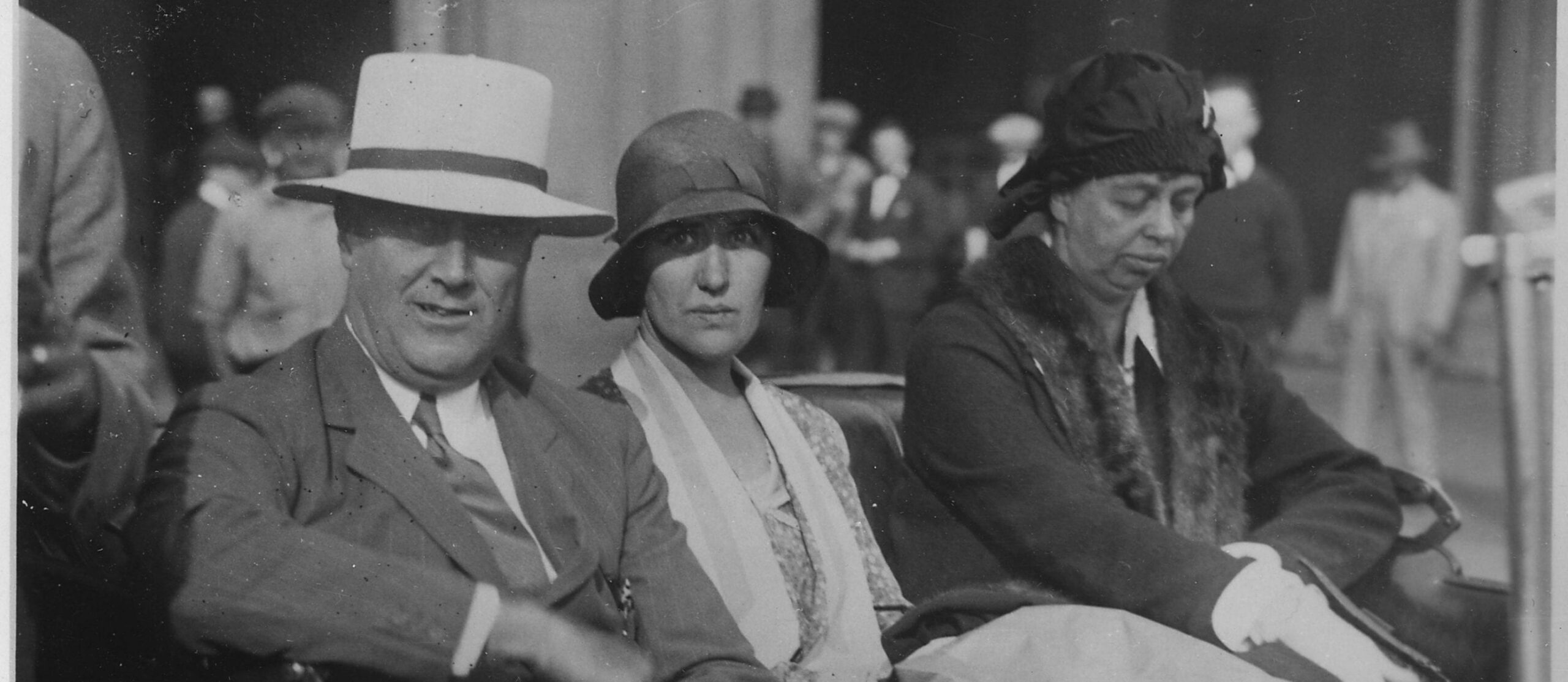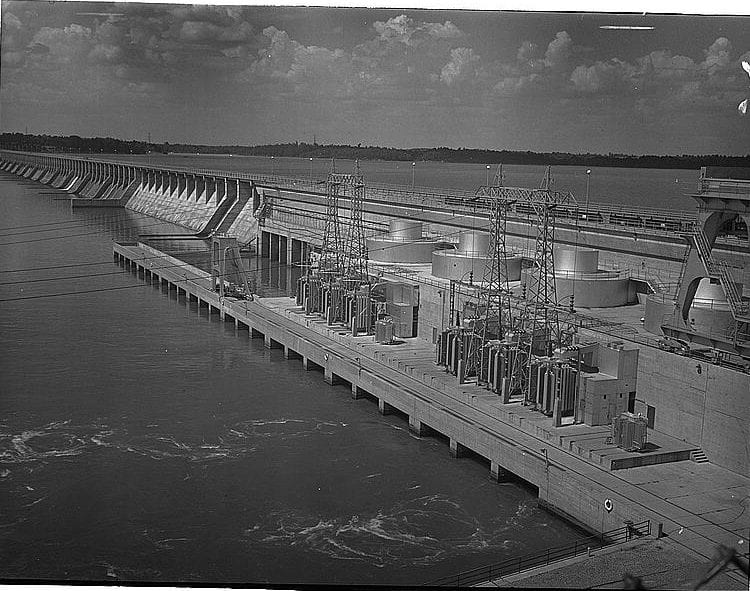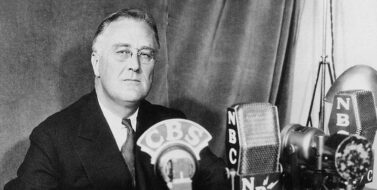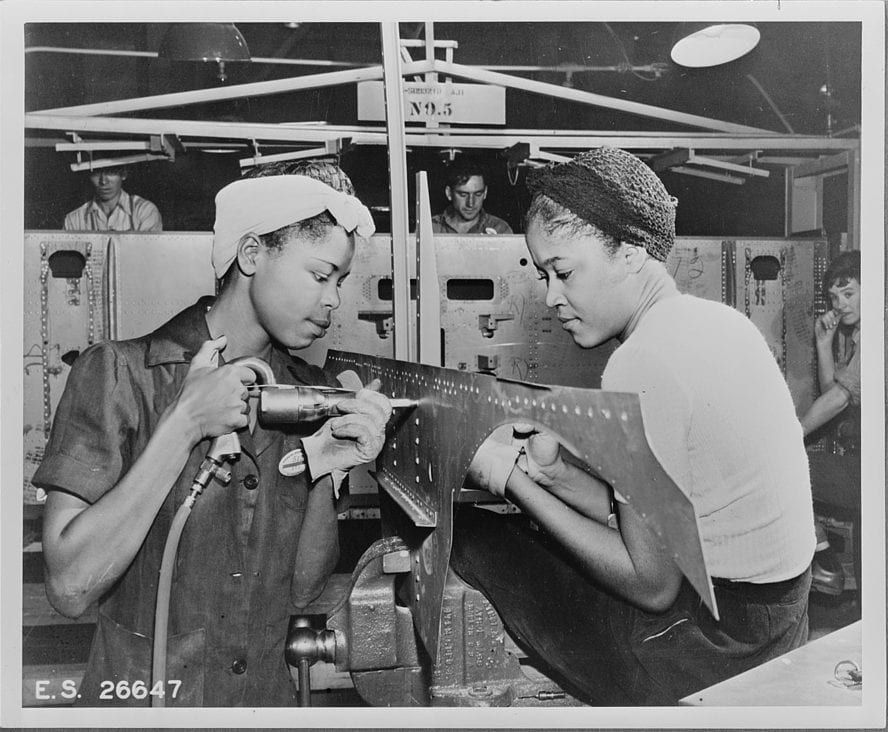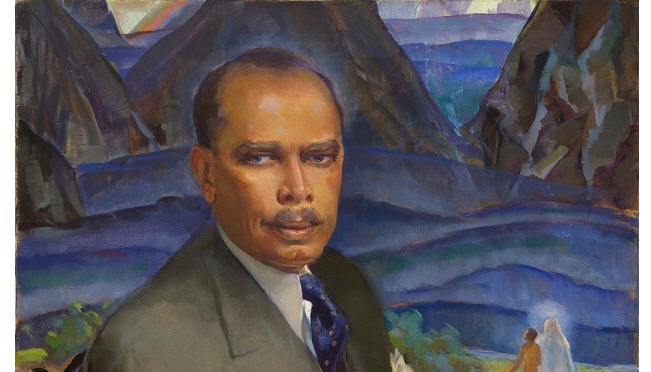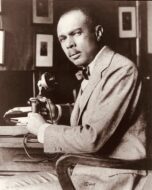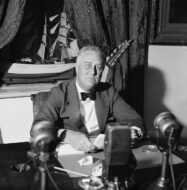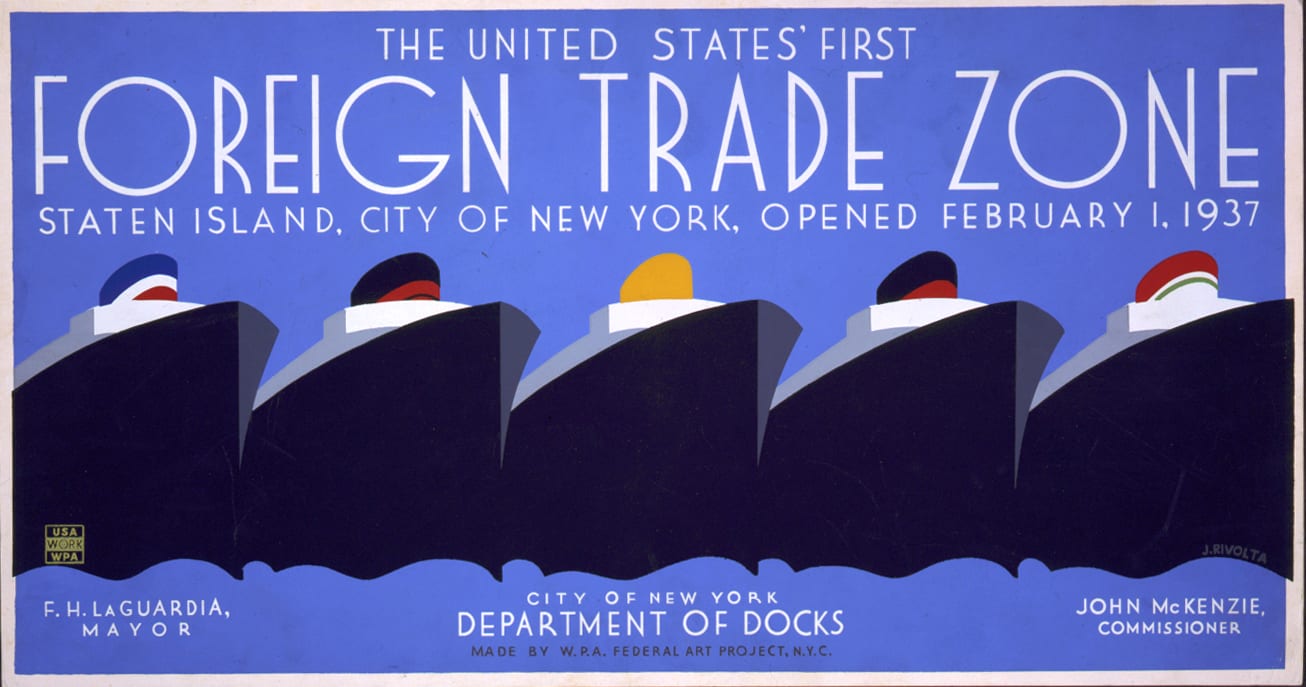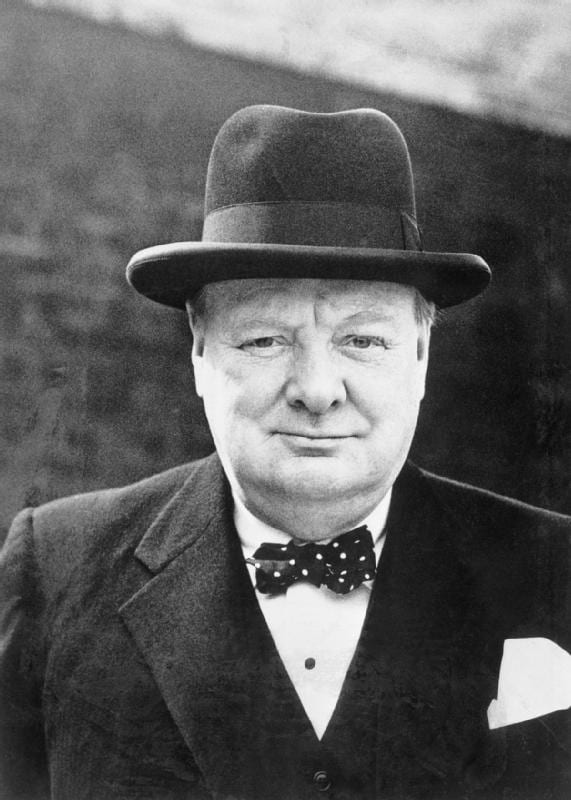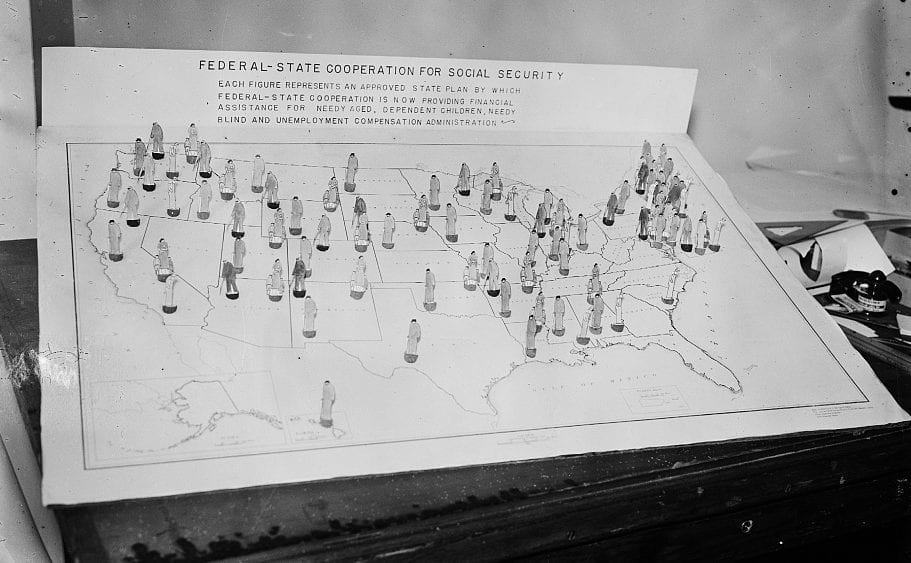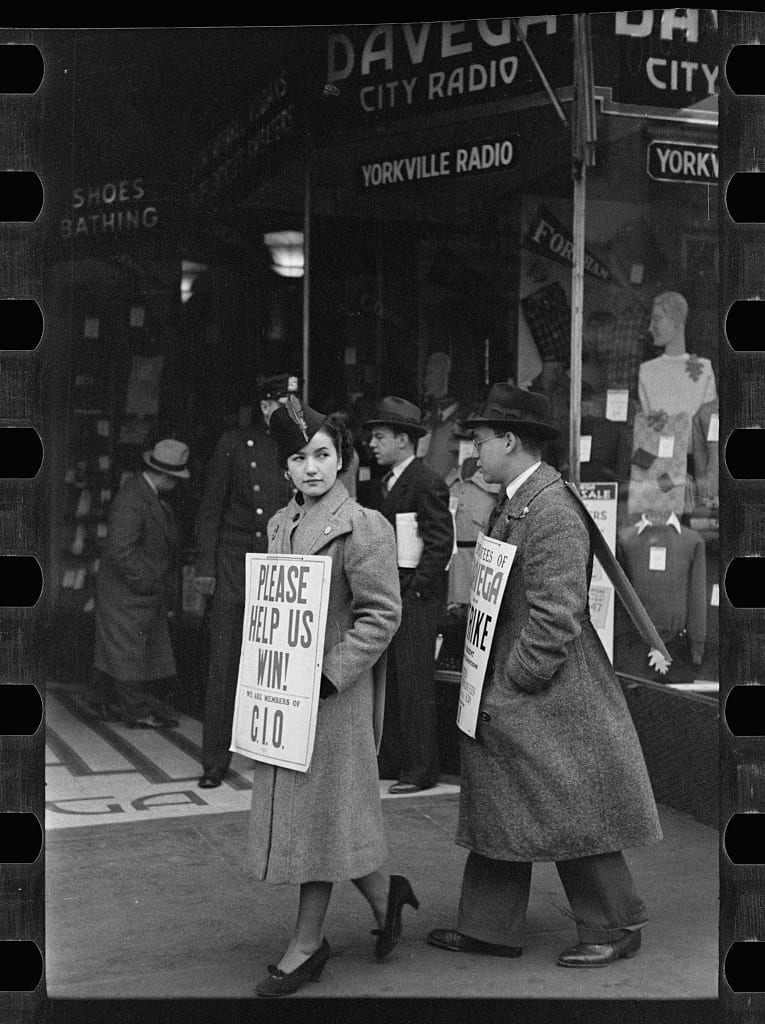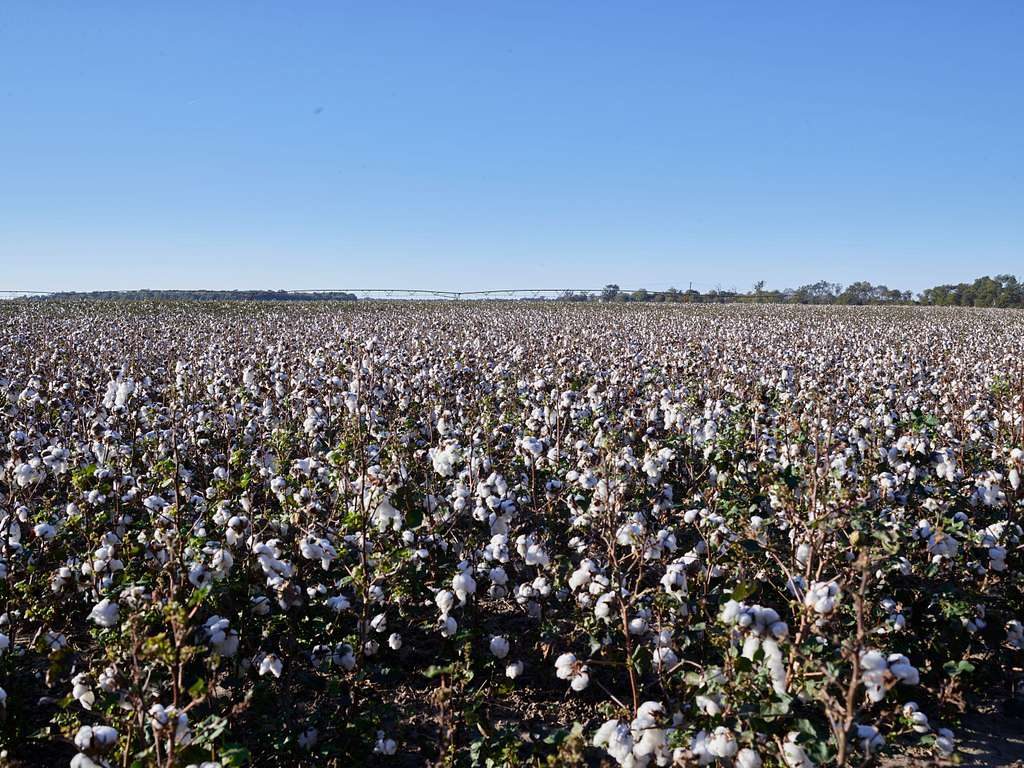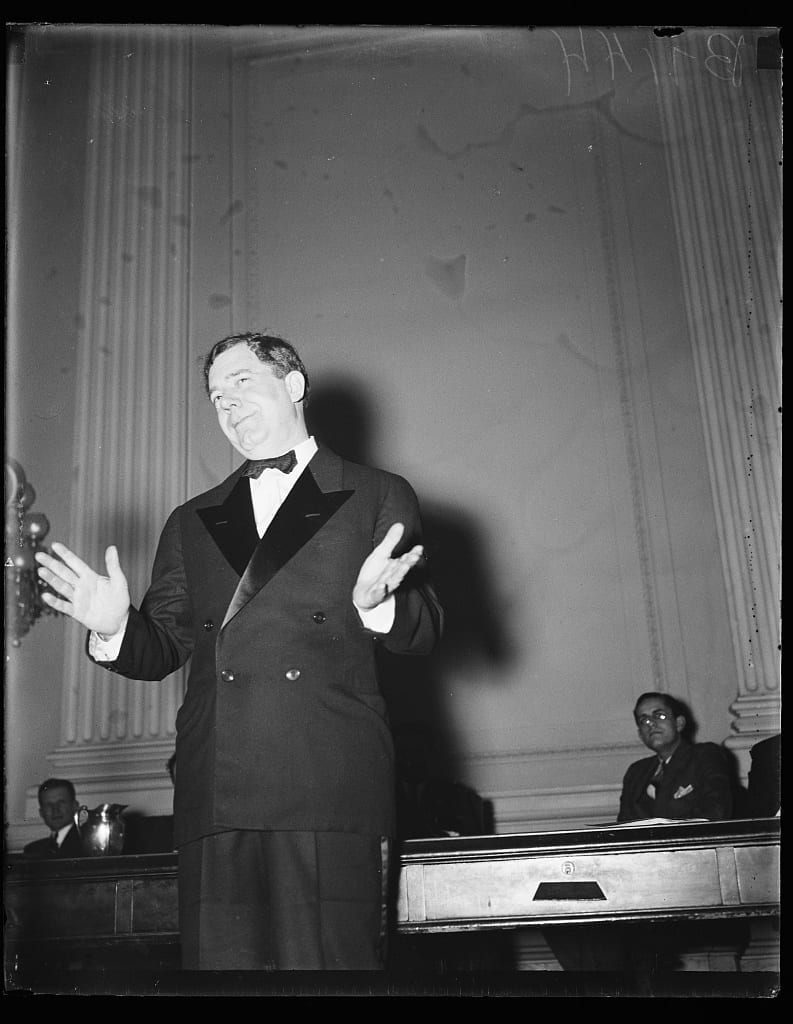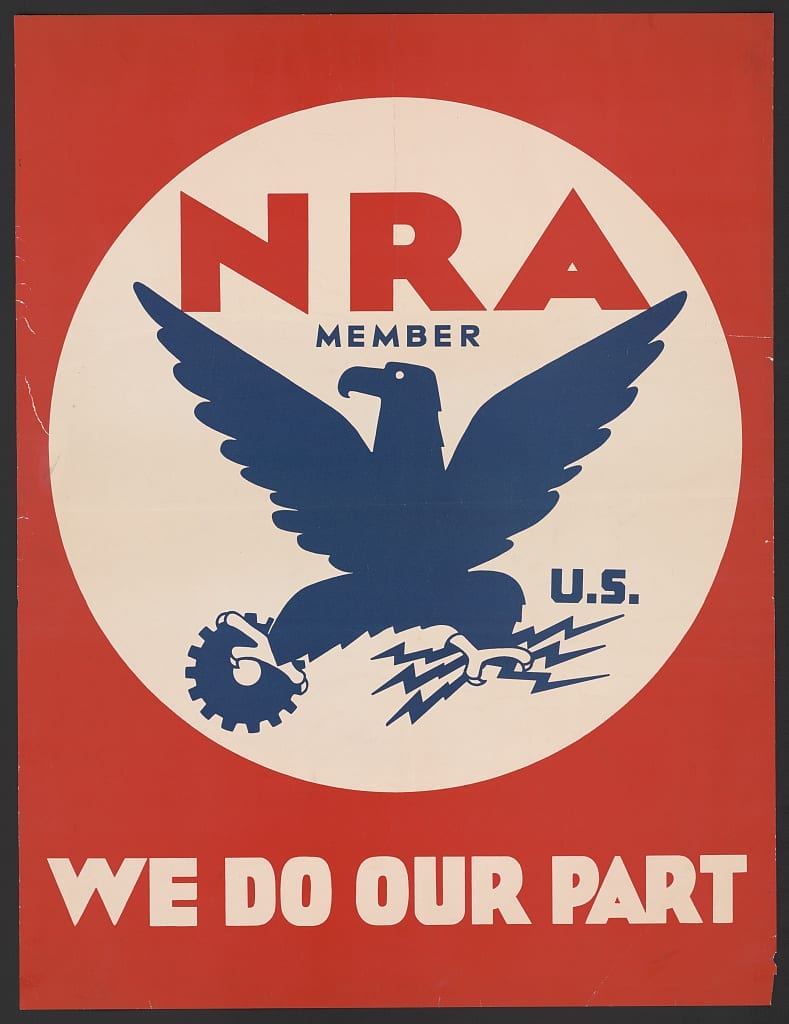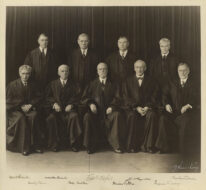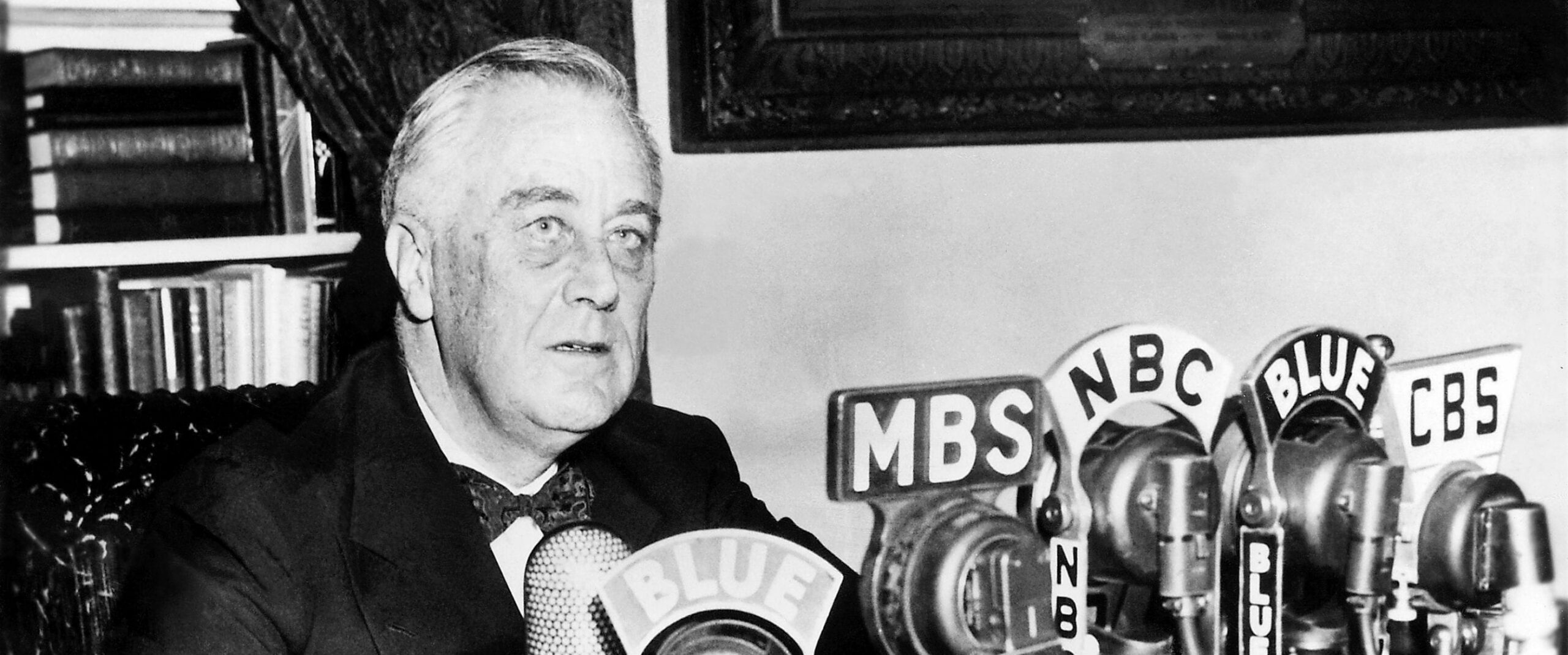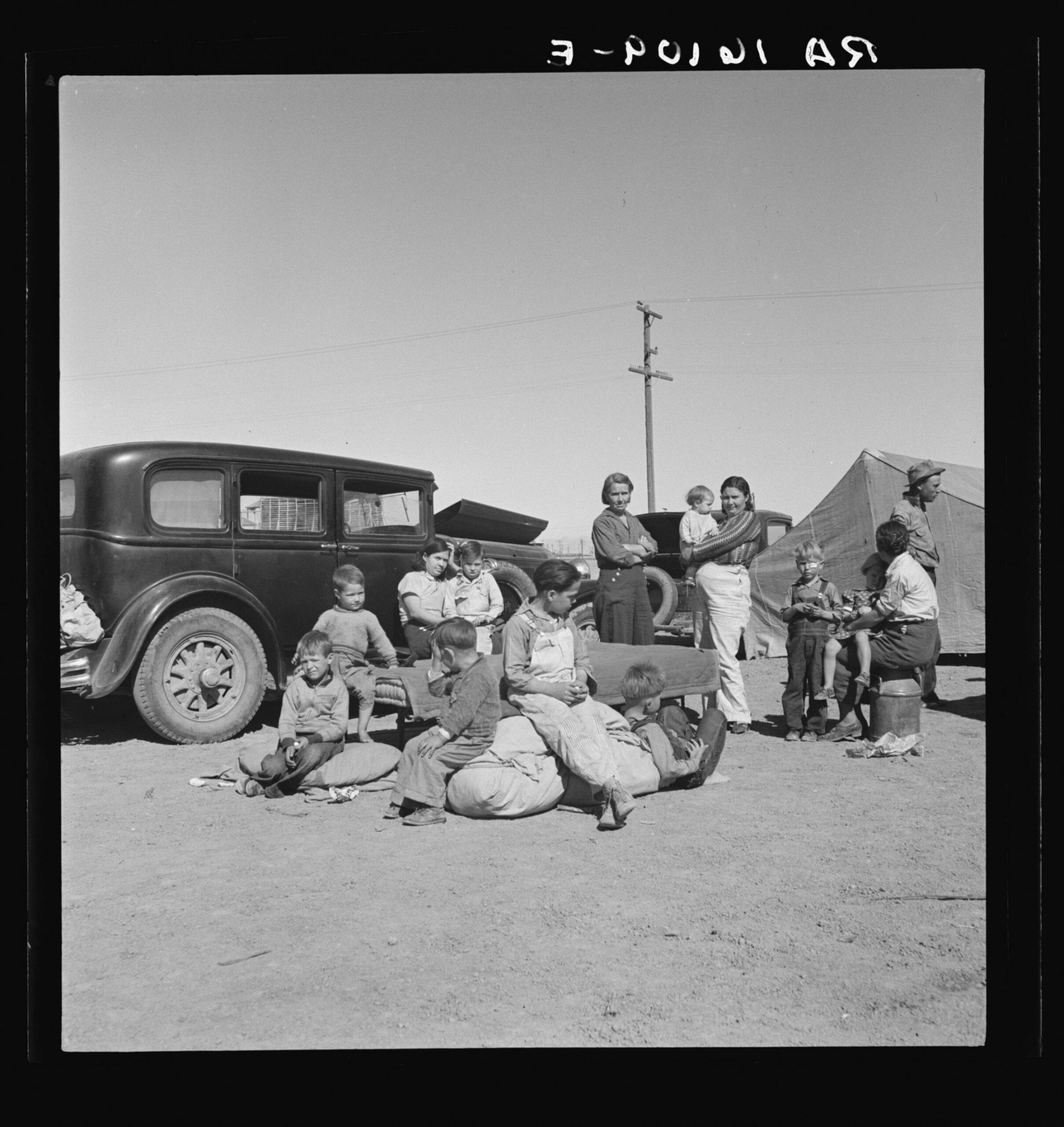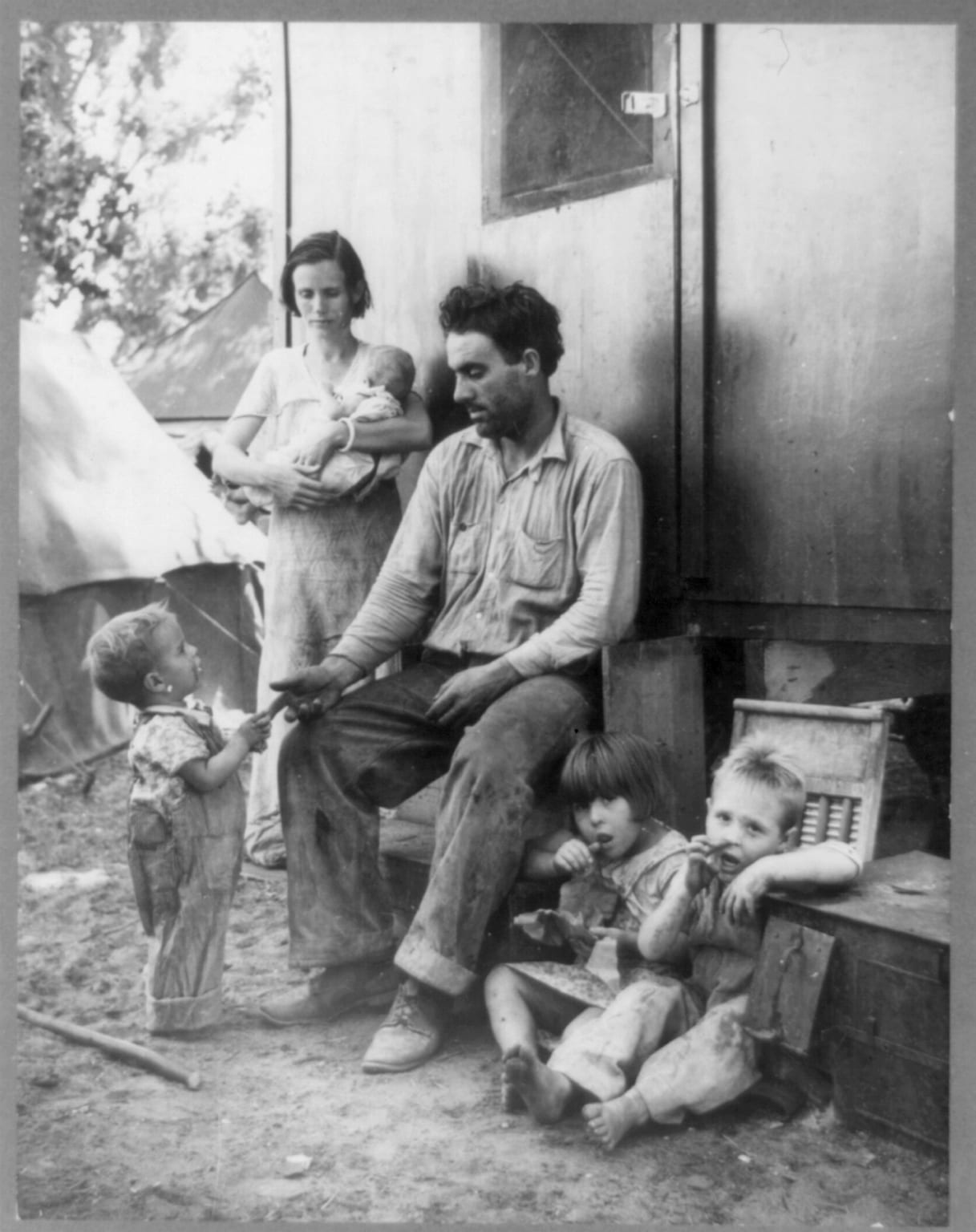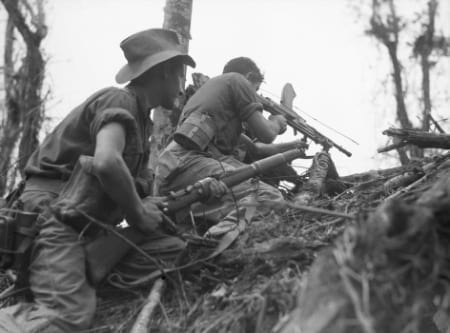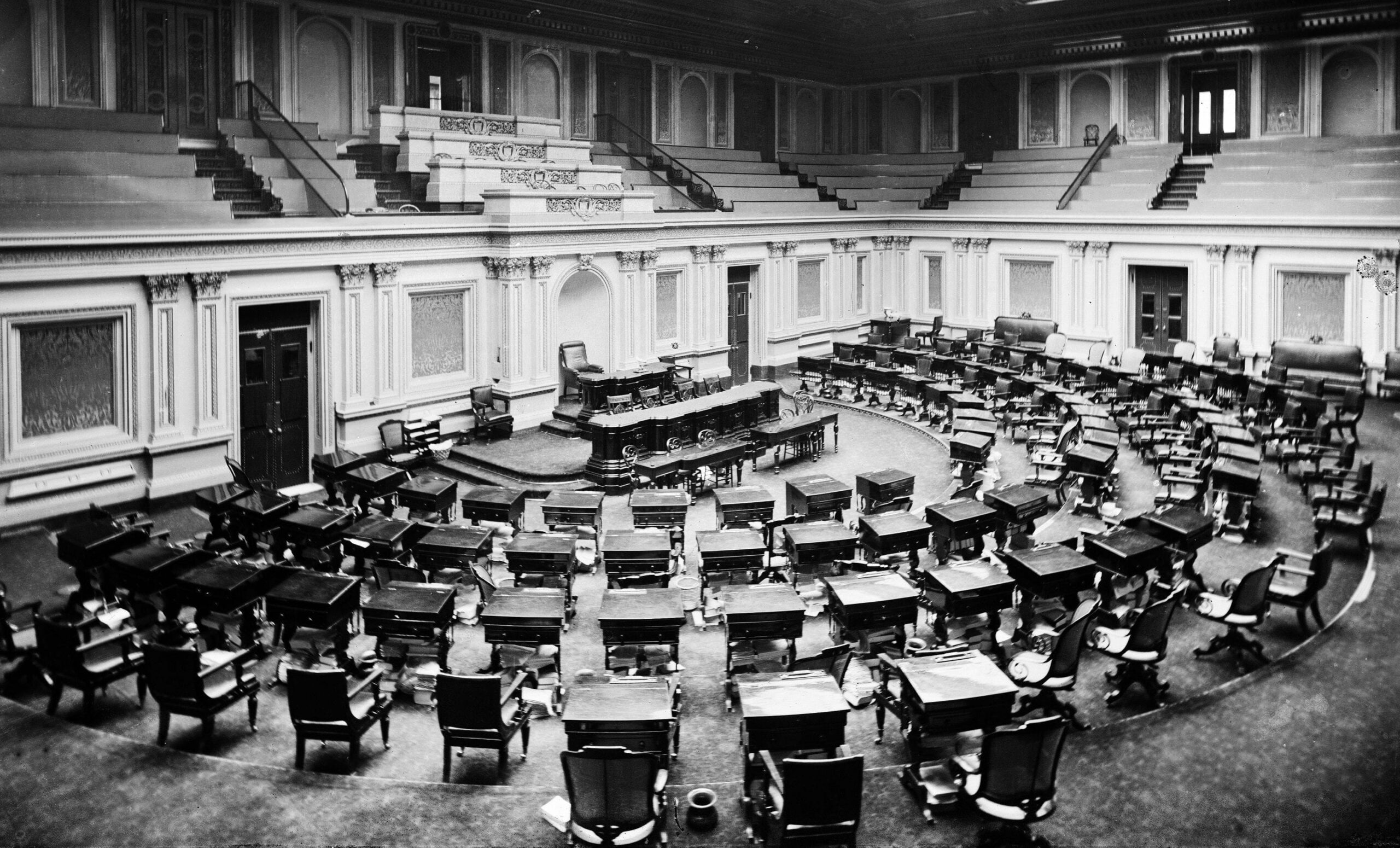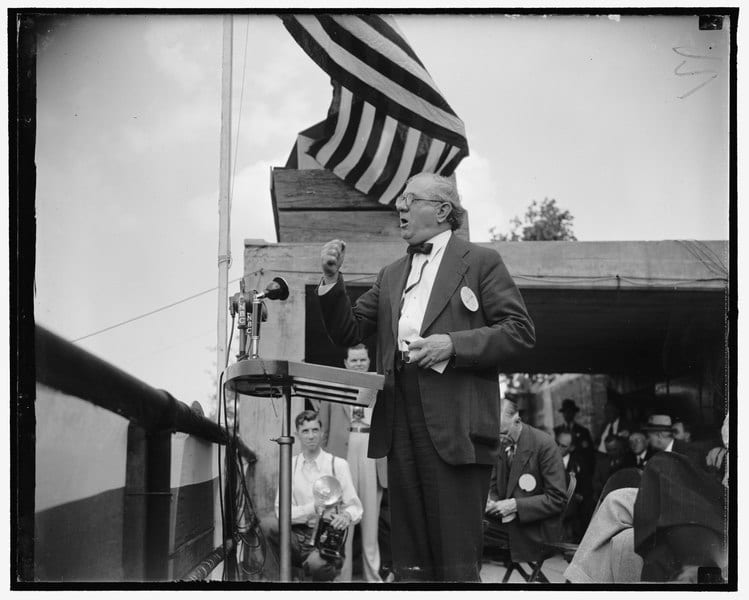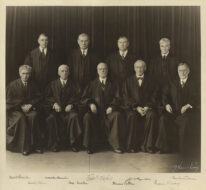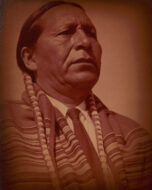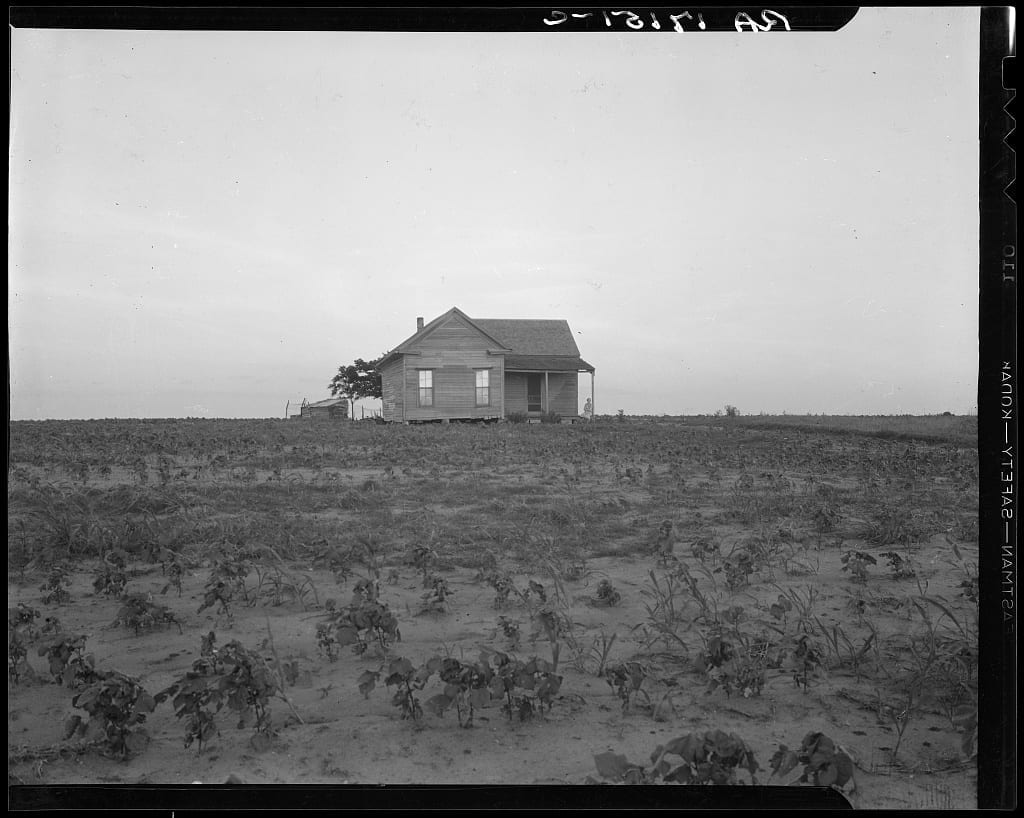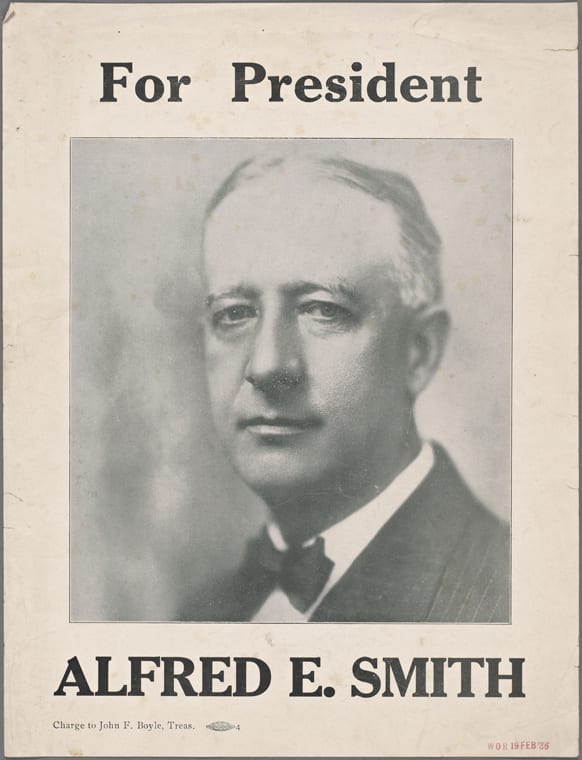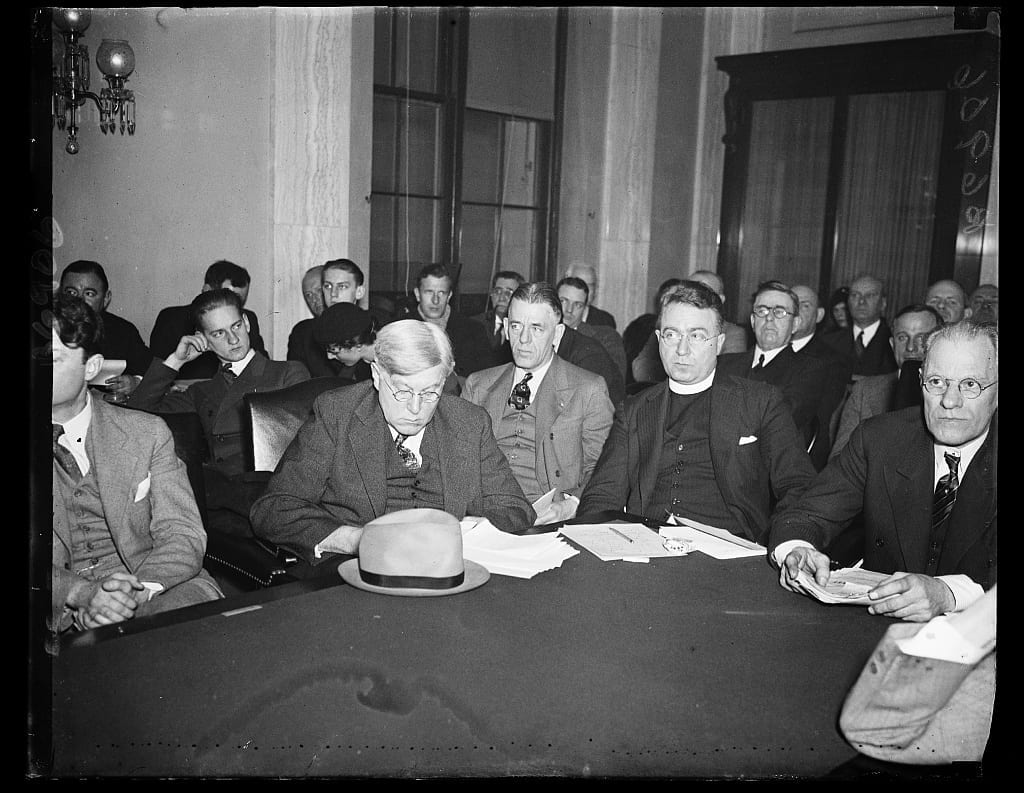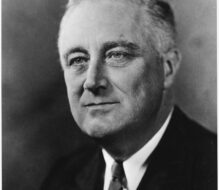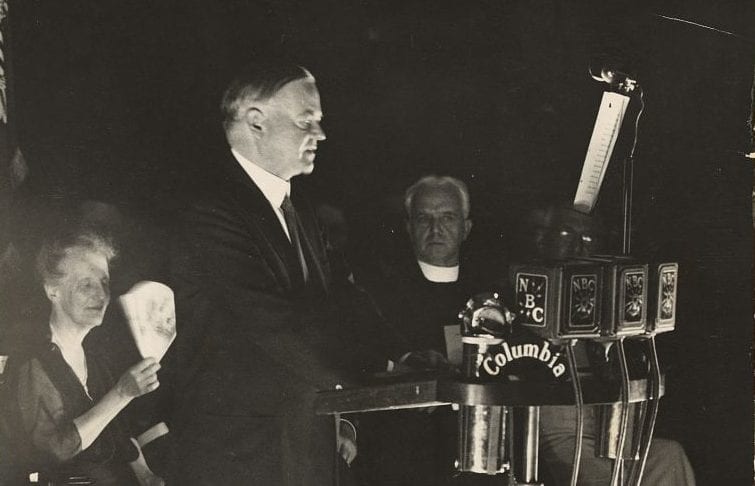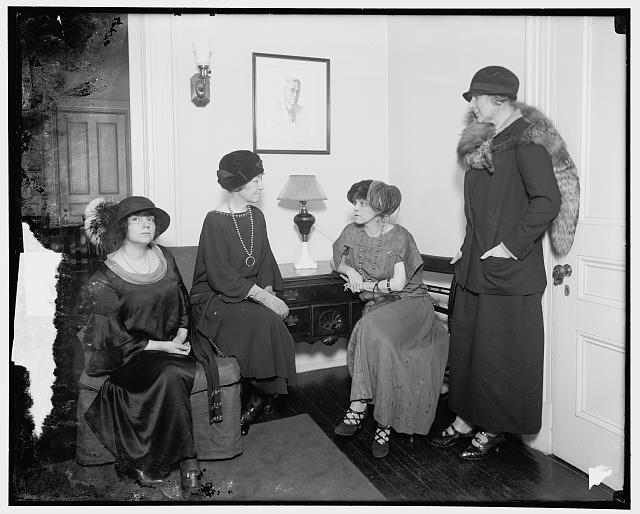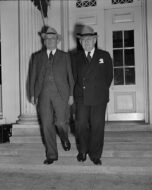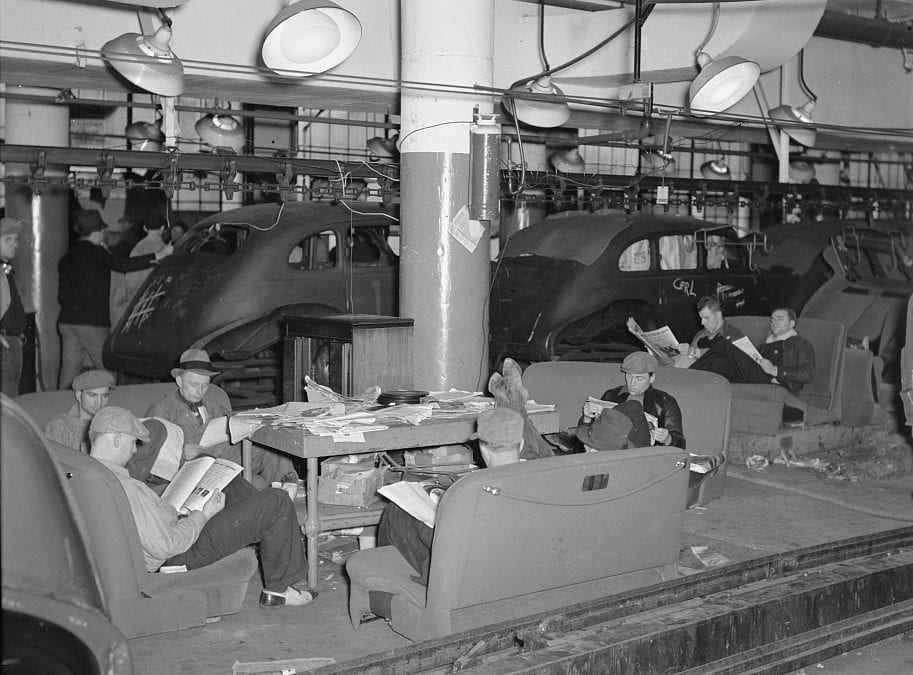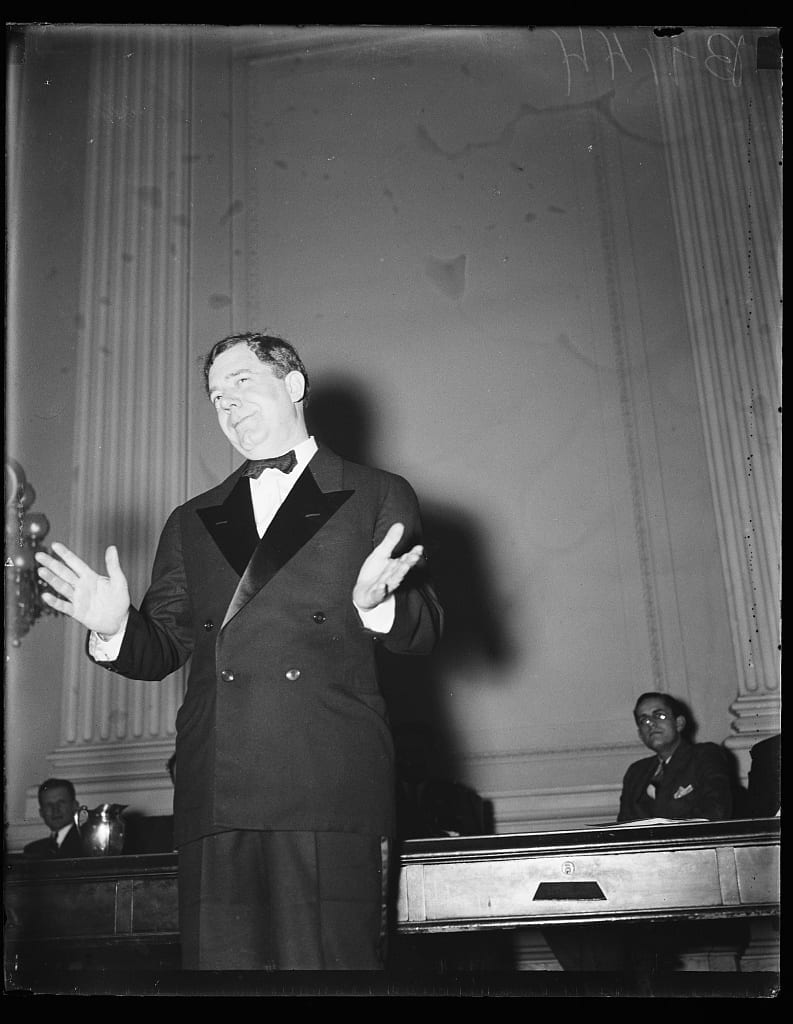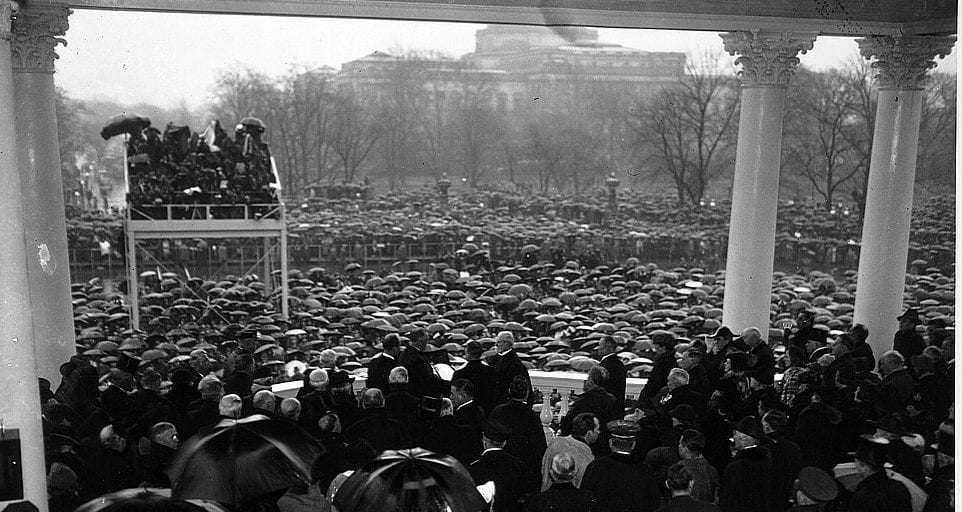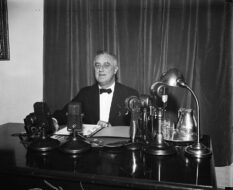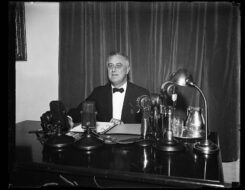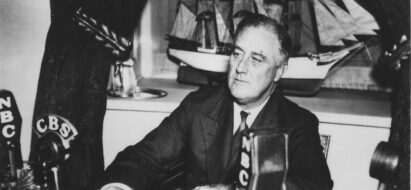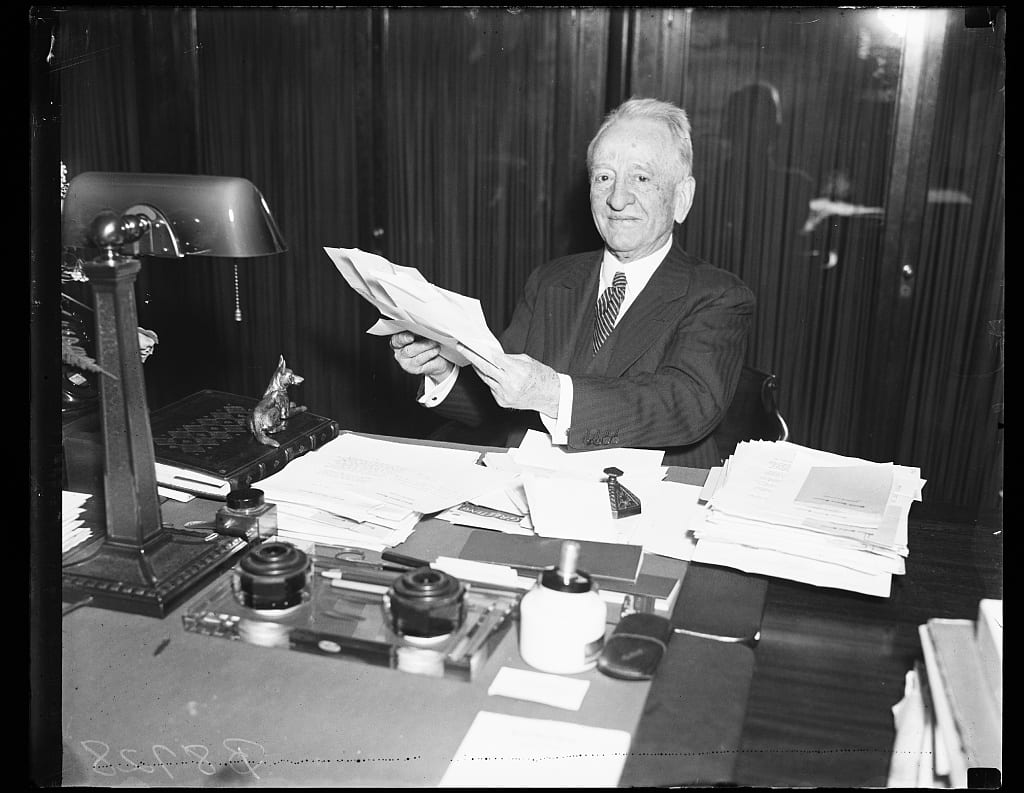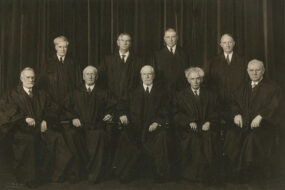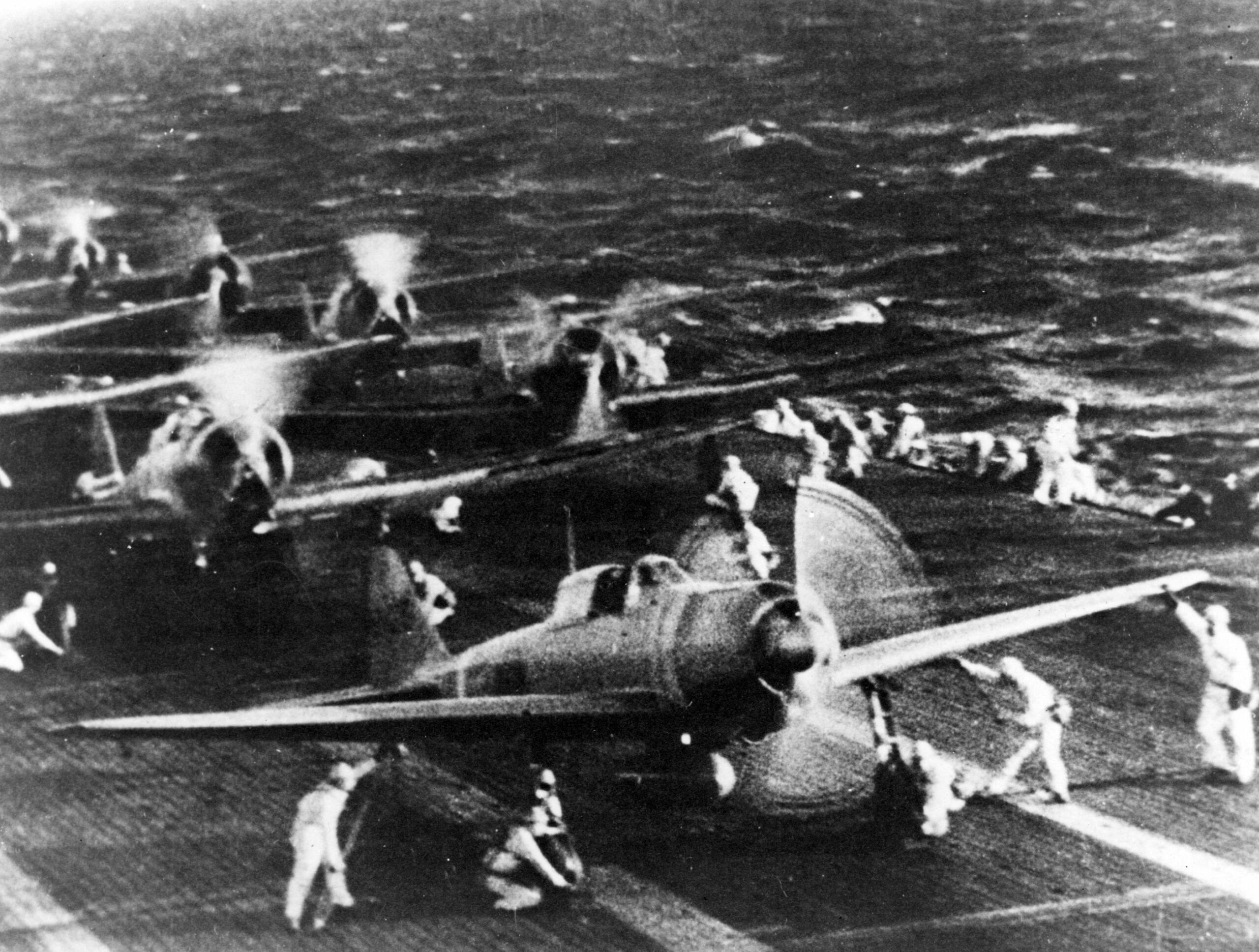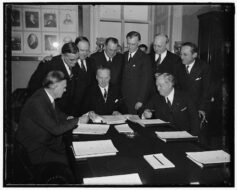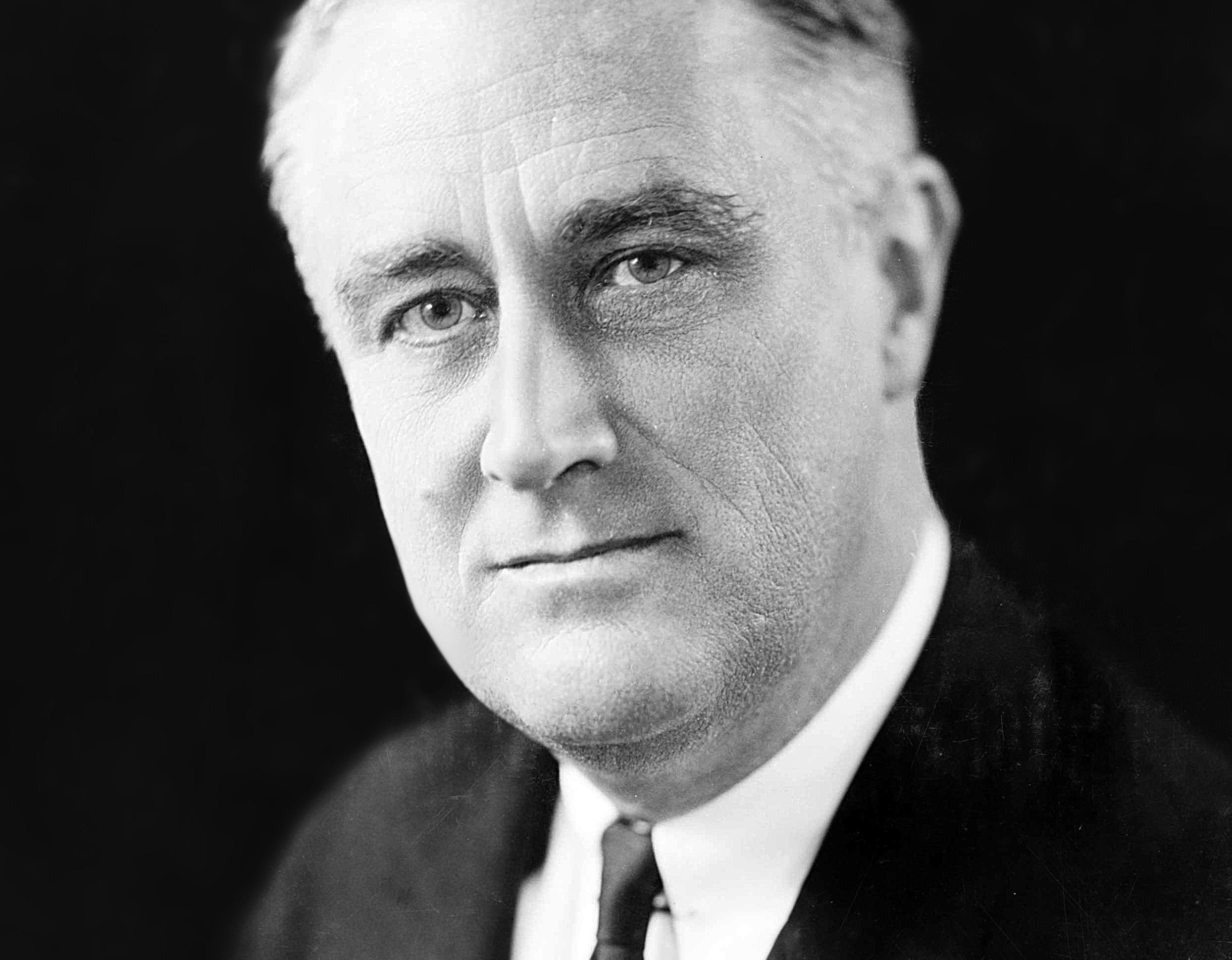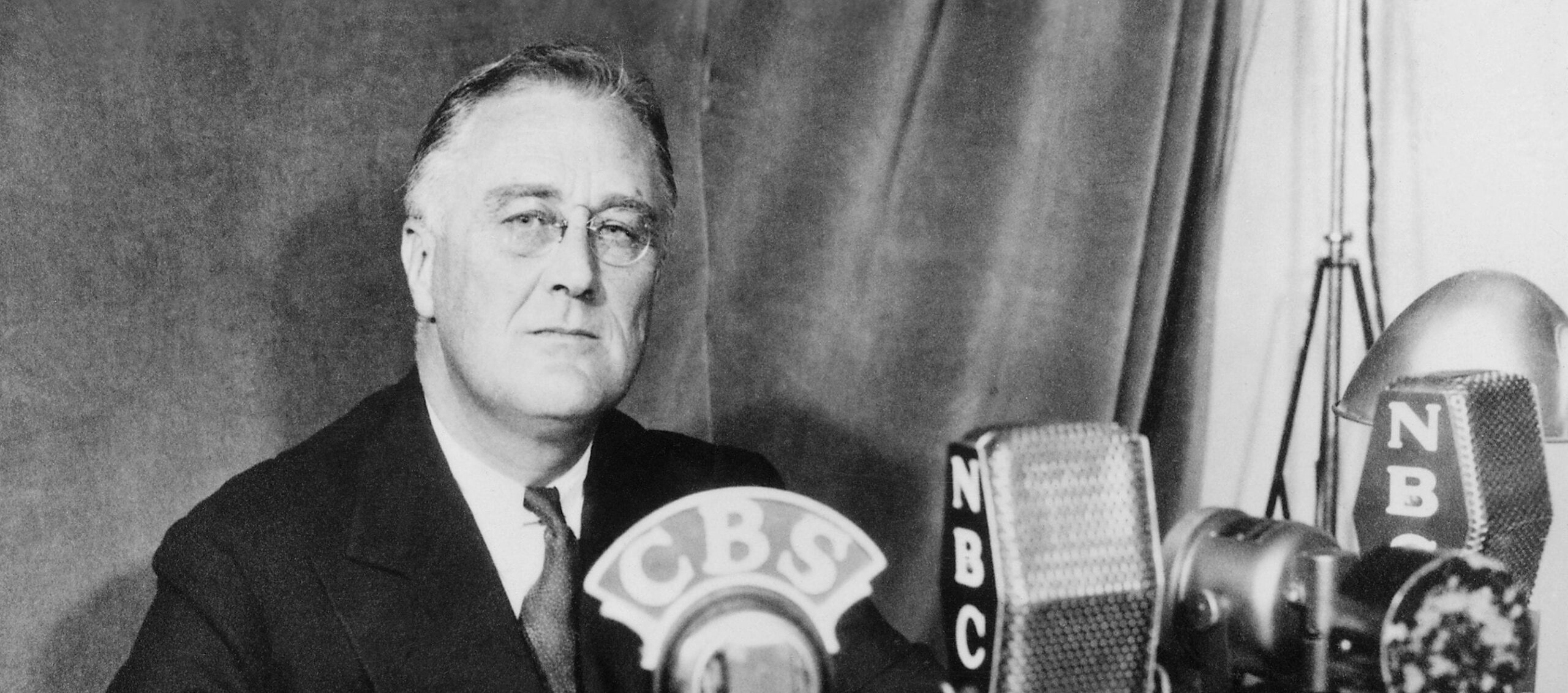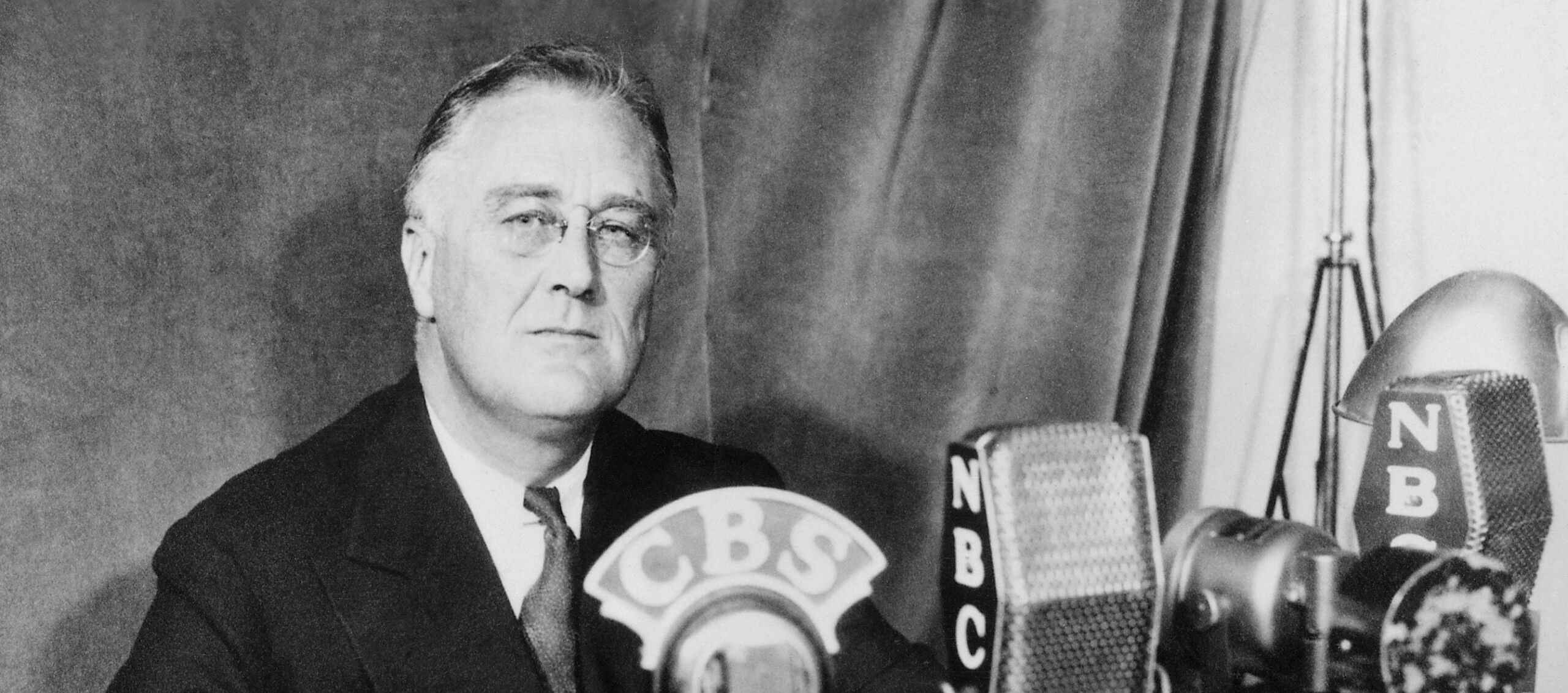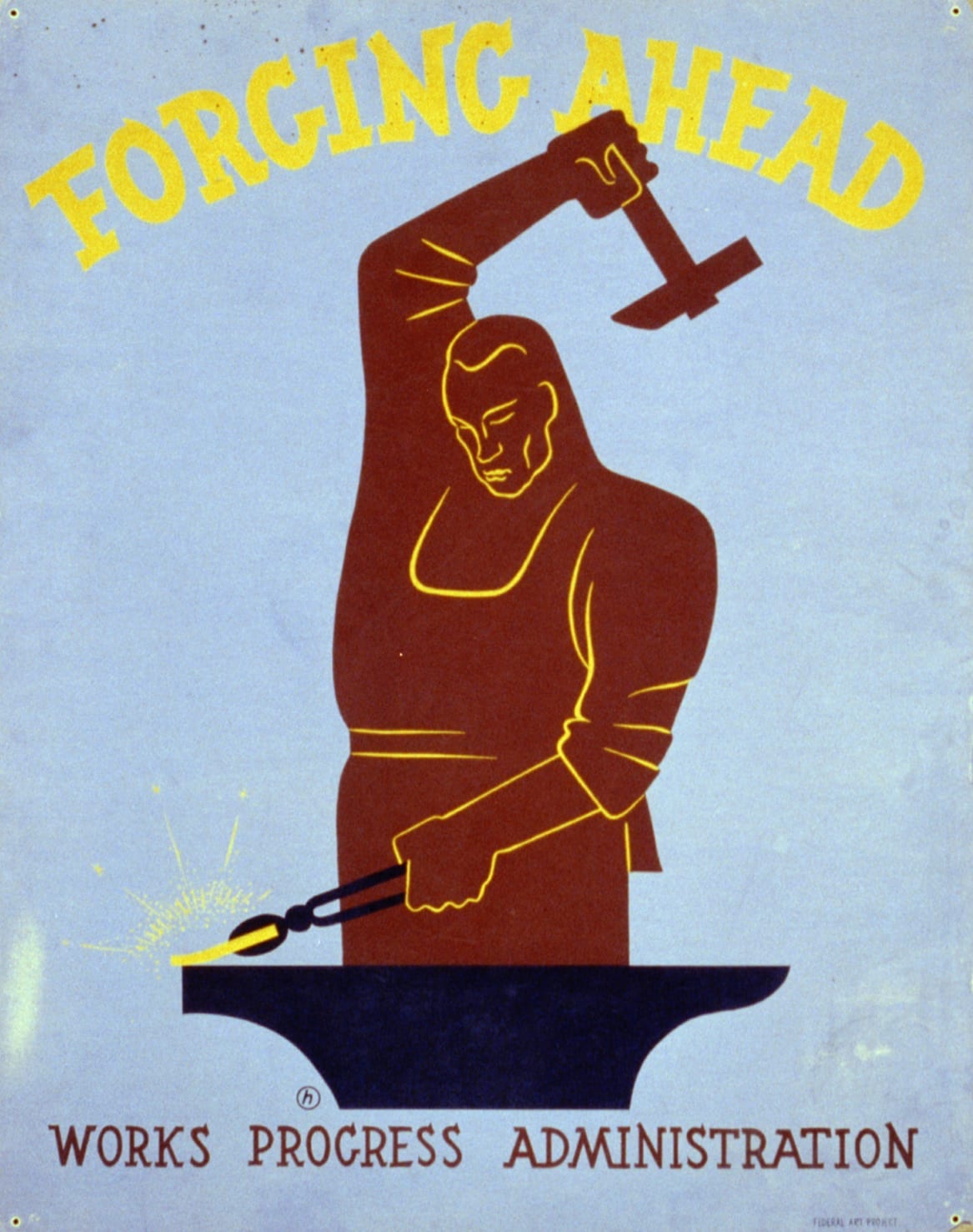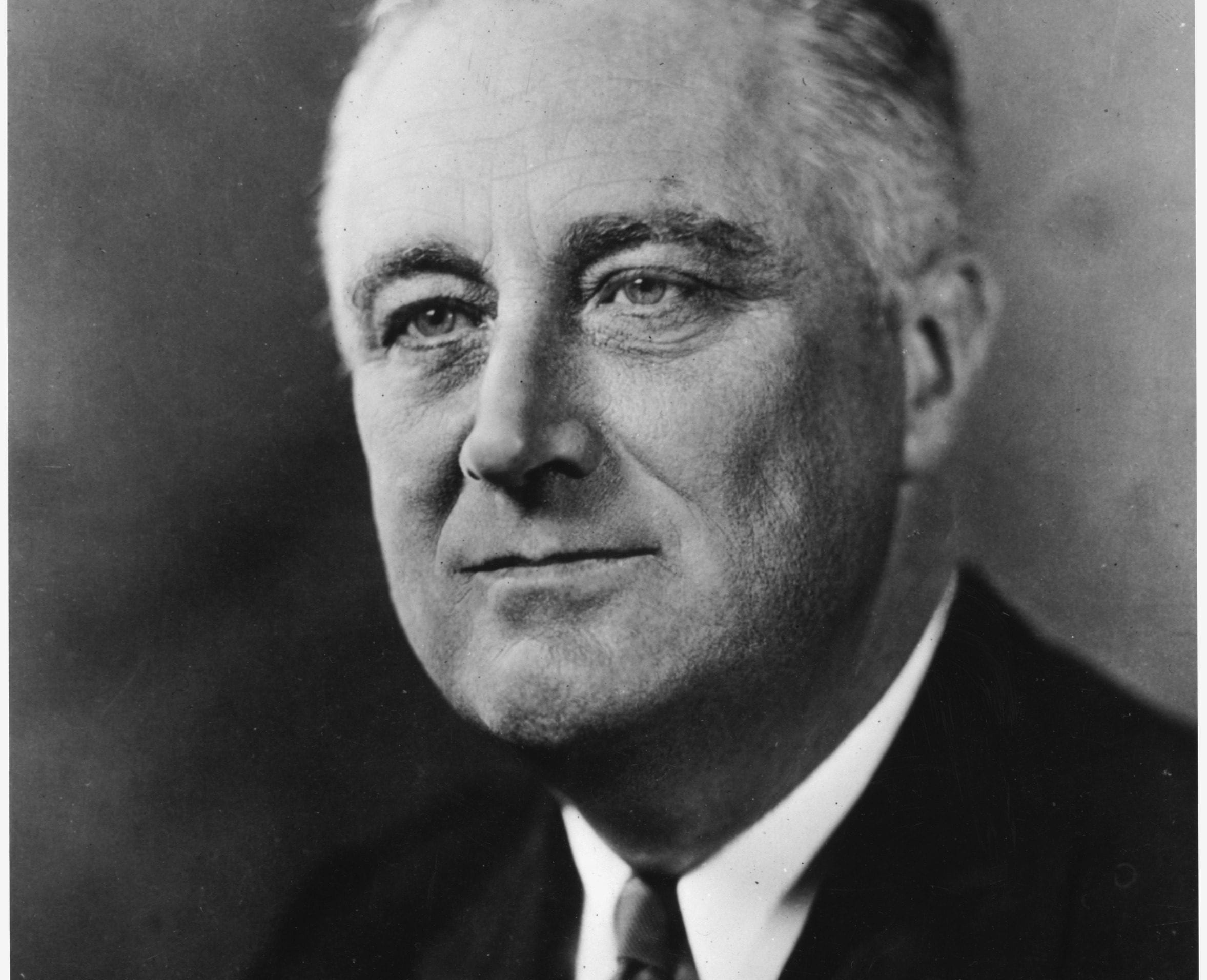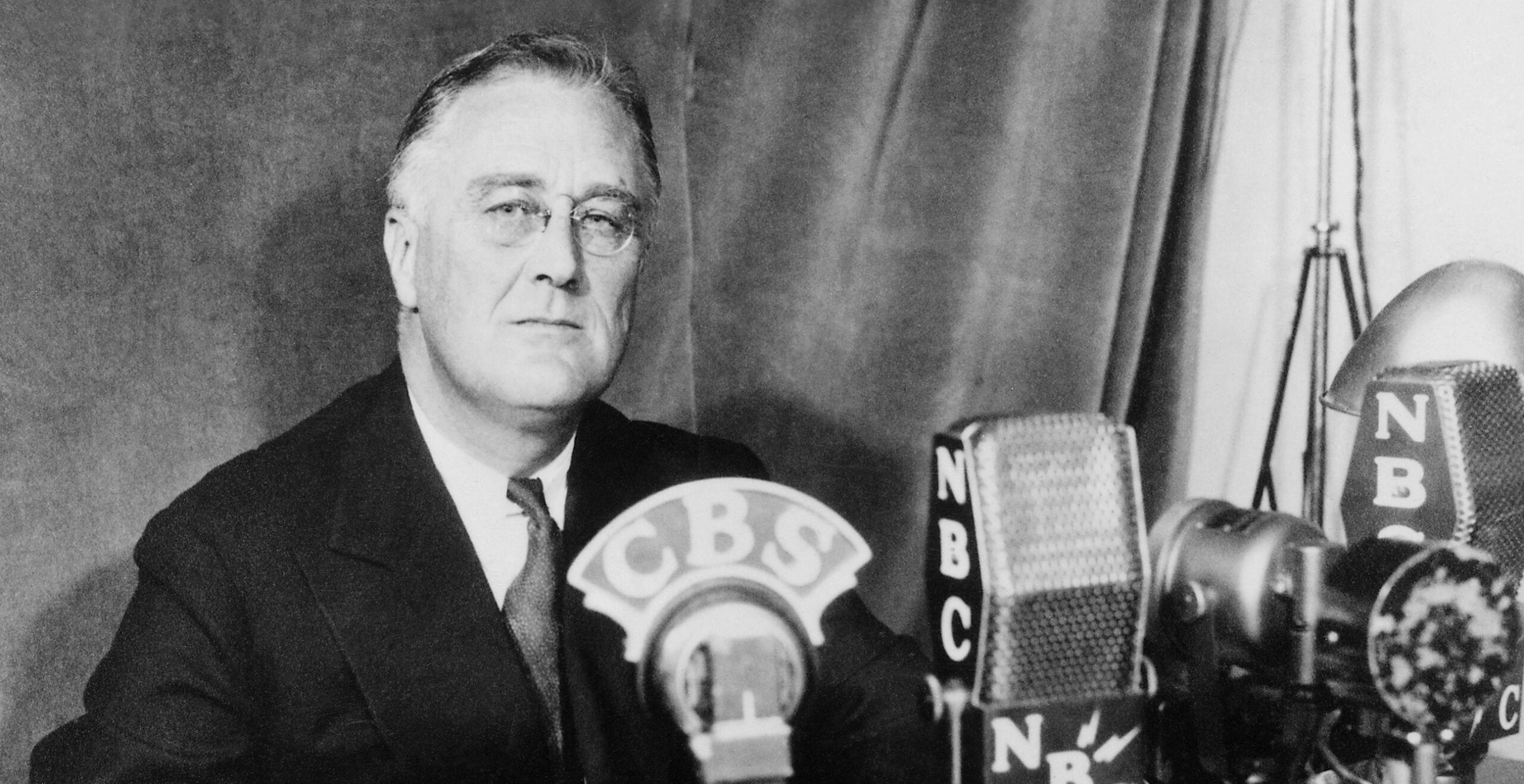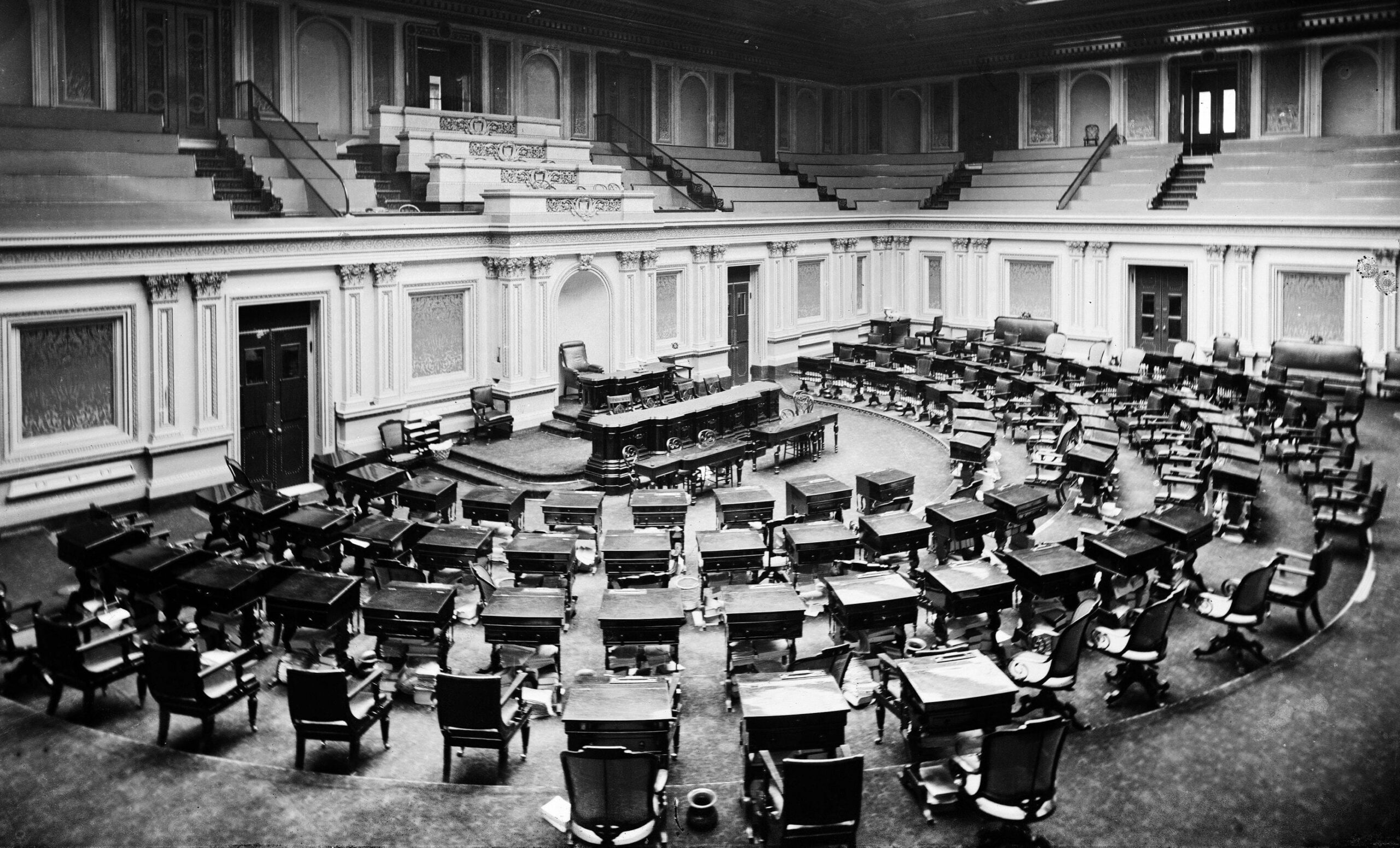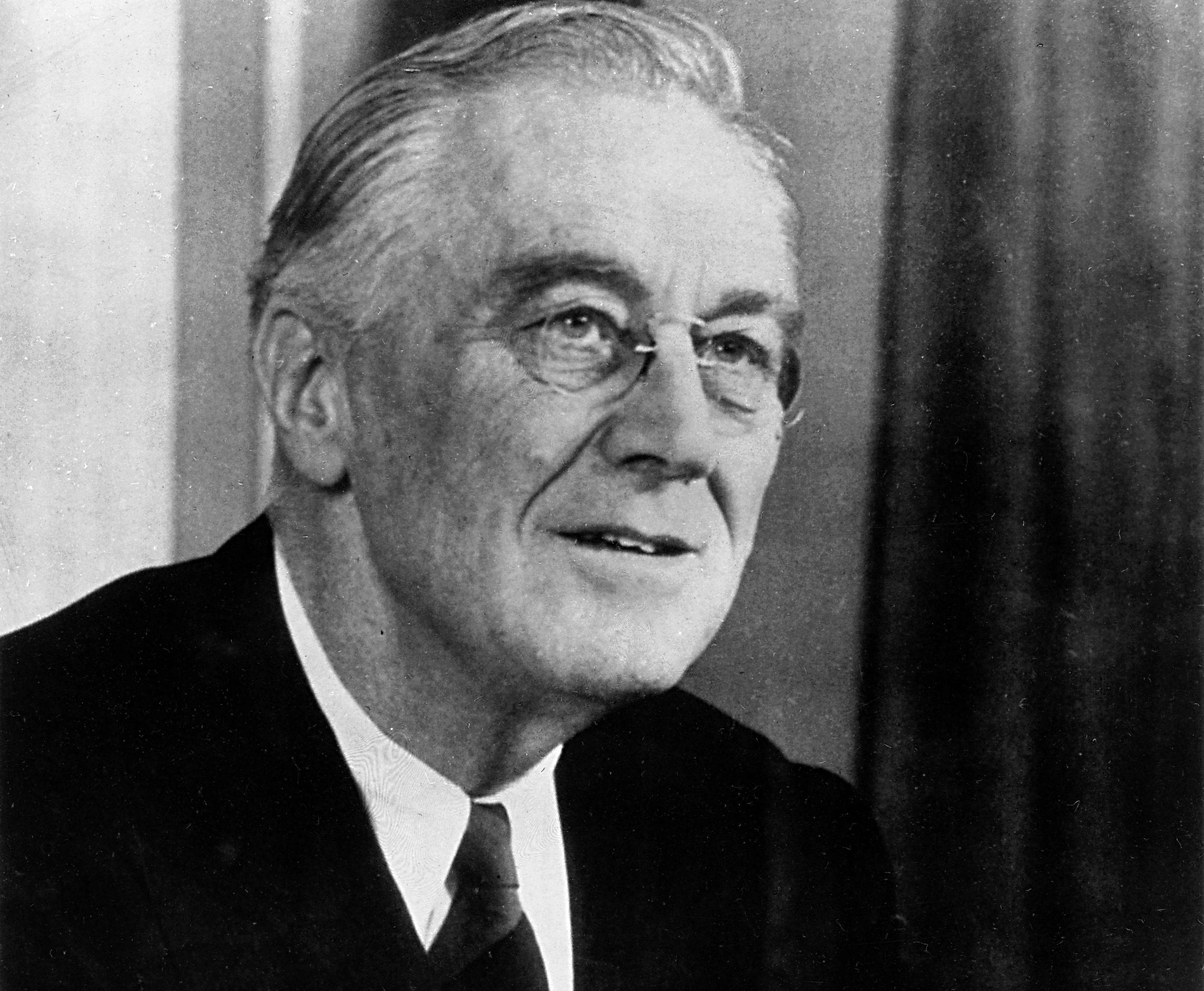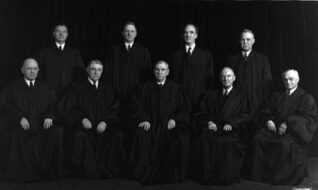

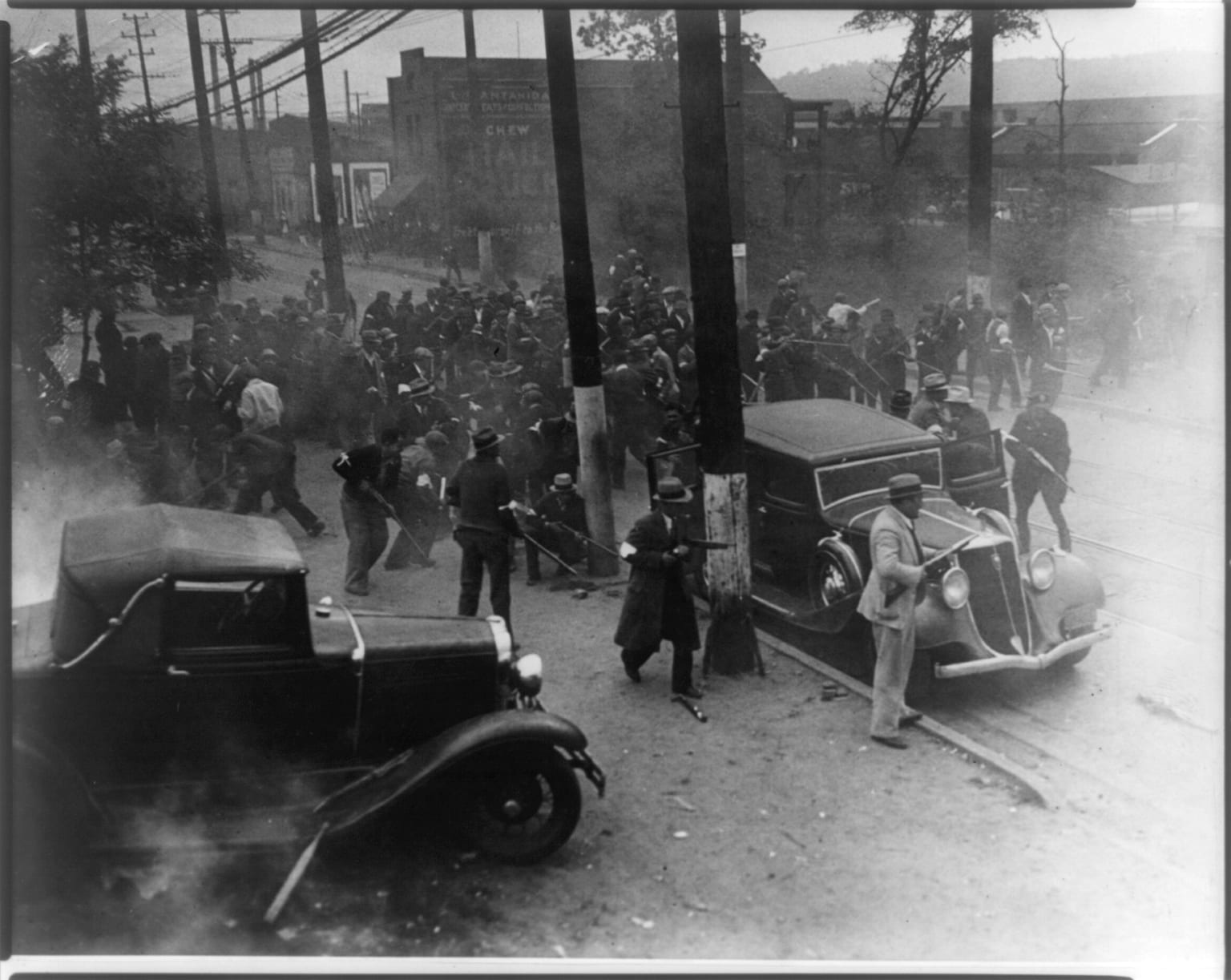
No related resources
Introduction
Labor disputes continued to multiply during the first year of the Roosevelt administration. Much of the unrest centered on the formation of so-called industrial unions, which under the leadership of the Congress of Industrial Organizations aggressively sought to organize unskilled and semi-skilled factory workers. This was in sharp contrast to traditional “craft unionism” represented by the older American Federation of Labor. The unions affiliated with the AFL tended to represent skilled workers such as carpenters and electricians, and they emphasized cooperation over confrontation in its relationship with management. However, as the left-wing journalist Mauritz Hallgren pointed out in this article, the relationship between the White House and organized labor was complicated. There is no question that the Roosevelt administration was friendlier to industrial unions than its predecessor, and that Section 7(a) of the National Industrial Recovery Act (“Fireside Chat” On the Purposes and Foundations of the Recovery Program (1933)) gave a tremendous boost to organizing efforts. In a single month, 100,000 men joined the United Mine Workers, while another 50,000 joined unions for rubber tire workers. On the other hand, many leading members of the administration worried that labor unrest could impede economic recovery, and sought to discourage strikes.
Source: The Nation, 137: 3566 (November 8, 1933) p. 530 – 531.
Nearly a million American workers have gone out on strike since the New Deal began. Probably as many as l00,000 men are out today, the total rising or falling as old disputes are adjusted and new strikes begin. The number of disputes brought to the attention of the Bureau of Labor Statistics has increased fourfold in the last six months and more than 500 per cent as compared with the average for 1932. While not all these controversies result in strikes or lockouts, a large majority of them do. Even those that are settled peaceably reflect the unrest which is spreading among American workers.
This unrest has taken a violent turn in many communities. It has resulted not only in the usual wholesale arrests of strikers and strike pickets but in the destruction of property: in the coal country mine tipples1 have been dynamited and bridges and miners’ homes blown up, and in Philadelphia motor trucks laden with goods have been set afire. It has also led to numerous riots, from which both workers and police have come away with bruised heads and broken limbs, when no more serious injuries have been inflicted. Indeed, press dispatches show that some hundreds of strikers have been wounded and perhaps a dozen killed in clashes with factory guards, deputy sheriffs, and city police.
It is true that, measured either numerically or in terms of violence, the present wave of strikes seems mild and peaceful compared with similar series of outbreaks in the past. In 1919, for example, there were 2,665 labor disputes, strikes, and lockouts, involving no fewer than 4,160,348 workers – three times as many as had ever before or have since participated in such disputes in any one year. This period, which saw the rise of a militant revolutionary movement and also witnessed the notorious Palmer red raids, was doubtless the most turbulent in recent labor history.
The revolutionary fervor that gripped a section of the working class in 1919 is absent today, and there is no indication of a trend toward extreme violence on the part either of the workers or of the authorities. Yet it is well to remember that the present labor unrest is far from having run its course. And it must also be remembered that there is in the present situation a factor that did not exist in 1919 or in the seventies and eighties of the last century. In the past the workers had always to fight on their own. They had to contend not only with an antagonistic employing class and an apathetic public but with a government that was at least unsympathetic when it was not openly hostile. The attitude of the government has now been changed, or so we may presume from the language of the recovery act and the utterances of Administration officials. Under the New Deal the government is actively supporting the cause of the working class. At least many workers believe this, whether or not it is actually true. Whatever the ultimate effect of the apparent combination between government and labor may be, it is clear that it has introduced a new and uncertain factor. Hence it is difficult, if not quite impossible, to compare the present strike movement with similar movements in the past.
It is probable that the summer and autumn of 1933 would in any case have seen an outbreak of labor troubles. There were portents of a minor upturn in business even before Franklin Roosevelt took office. Such upturns have in the past invariably been accompanied by labor unrest, for it is when economic recovery begins and prices start to climb that the divergence between living costs and wage-income is brought into sharpest focus for the average workingman and his wife. But the number of strikes was undoubtedly increased by the brisk but basically unsound boom in industry that took place from May to August. Production indices soared almost to normal and retail prices started upward, but the employment index was left far behind and the payroll totals showed hardly any change at all. That this boom, largely the product of the government’s currency policy, was an important factor in stirring up the workers cannot be questioned.
However, other and perhaps more important factors have been at work. For not all the strikes called to date have had higher wages or improved working conditions as their principal objectives. In fact, a majority of the strikes have been started with a view to compelling employers to recognize and deal with labor unions. There have been few strikes and few signs of unrest in the organized industries – for example, in the printing trades, among the railroad workers, and in the building trades. On the other hand, many controversies have arisen in open-shop2 industries, such as steel and automobiles, and in loosely integrated industries – bituminous3 mining and the clothing and needle trades, for instance – where internal conditions have been such as to make the organization of labor difficult. Labor unions have been active in these latter industries for many years, but in no case have they been wholly successful. On the contrary, the United Mine Workers, which even at the zenith of its power had been unable to penetrate the important Appalachian or Southern fields, was literally falling to pieces when the recovery act came to its rescue. In the clothing industry such organizations as the Amalgamated Clothing Workers did much better, but even these unions, alert and progressive as they were, had difficulty in keeping up with the shifting of sweatshops across State lines and with the other rapid changes so easily effected in an industry made up of small, mobile units.
It may be noted that most of the strike activity has been confined to industries where progressive or radical unions had been at work or where industrial unionism had gained a foothold. This has been true especially of the clothing and textile industries, in which the Amalgamated Clothing Workers, the unions of the Conference for Progressive Labor Action, and the Communists have been active; and also of the bituminous industry, in which the United Mine Workers, the largest industrial union in the country, seems once again to be fairly well established. It has been less true of the steel and automobile industries, which the craft unionists of the A. F. of L. appear to have marked out for themselves. Most of the recent steel strikes have been inspired or openly called by the Communists rather than by the A. F. of L. unions, while the few automobile strikes that have taken place have been more or less spontaneous. The A. F. of L. has been active in building up its membership, but it has been far behind the progressives and radicals both in its militancy and in its willingness to expand into new fields. There are numerous industries, not included in the list above, which are either entirely unorganized or at best inadequately organized, and in which there have been very few labor disputes. The absence of such controversies does not necessarily mean that the workers are satisfied with conditions in these industries, for the contrary is more likely to be the case; it suggests rather that union organizers have as yet made no serious attempt to enter these industries. Why the A. F. of L. has made no determined effort to organize a field which is practically virgin territory may perhaps be ascribed in part to its refusal to abandon the principle of craft unionism, and in part to the fact, as expressed by J. B. S. Hardman in The Nation of December 21, 1932, that for the federation leaders it would mean “going out of well-appointed offices into the field, jeopardizing accumulated resources, sometimes taking a chance with life itself.”
To sum up, recognition by employers of established or new unions has been the chief objective of the strike movement as a whole. American labor is again in the midst of one of its periodic struggles to get itself organized. Whether it will be any more successful than it has been in the past remains to be seen. This time, in any event, it appears to have the support of the government. Section 7a of the recovery act, which President Roosevelt has called labor’s “new charter of rights,” frankly says to the workers in the unorganized industries: Go ahead and form your unions; the government guarantees that they will be protected and recognized. This guaranty is obviously worthless in fact unless it can be enforced, and the workers, facing a hostile employing class, have thus far found no way to enforce it except by resort to strikes.
One concrete result of the wave of strikes has been to arouse apprehensions concerning its effect on the Roosevelt recovery program. Already many voices have been raised to suggest or demand that the right to strike be suppressed in the interest of economic recovery. Ida M. Tarbell4 has denounced the strikes as antiquated and barbaric. The Paul Block newspapers5 recently published an editorial declaring that the “hundreds of strikes throughout the country are largely responsible for the retardment of business programs. . . . Business is ready to start upward, and no one, either employer or employee, should be allowed to stand in the way.” Edward F. McGrady, Assistant Secretary of Labor and formerly chief Washington lobbyist for the A. F. of L., asserted that there is “no doubt that the public sentiment of the country is almost unanimously behind the President. Unnecessary strikes will turn that sentiment against organized labor.” Leo Wolman, chairman of the Labor Advisory Board,6 contended that it is “unnecessary to call strikes to enforce” the labor provisions of the recovery law. “Labor,” he said, “cannot afford to endanger the success of the NRA.” Senator Wagner,7 chairman of the National Labor Board,8 has several times spoken in the same vein. General Hugh Johnson, head of the NRA,9 went so far in his speech before the A. F. of L. convention as to call the strike a form of “economic sabotage.” He openly hinted at government control of the labor unions should the strike movement continue.
There can be no question that any cessation of effort on the part of the workers will impede the Roosevelt program. With this in mind the Administration is hastily setting up extensive machinery for the purpose of intervening in labor disputes. The National Labor Board has been formed in Washington, and this body is organizing district branches in various parts of the country. The use of such machinery is understandable enough in cases where the disputes or strikes are of the usual sort having to do with wages and working conditions. But a large majority of the strikes today are designed to obtain that recognition for labor organizations which the recovery act presumes to guarantee the workers. In other words, no mediation or arbitration is necessary to settle these disputes. All that the Roosevelt Administration need do is to enforce the law of which it is itself the author. Hence it is strange to find even the labor representatives in the Administration speaking in terms of arbitration when discussing the labor disputes that have arisen.
It is likely, however, that the erection of this elaborate mediation machinery is not entirely without meaning. Granted that it was sincerely devised with a view to helping labor, the fact remains that it can be turned against labor. One notes, for example, that the National Labor Board contains what the suspicious-minded might consider an anti-working-class majority. Four of the seven members of the board are employing-class representatives, and if a real clash between the economic interests of capital and labor is brought before the board, this factor may make itself felt, even though at the moment two or three of the employing-class members appear to be sympathetically inclined toward the interests of the workers. In addition, two of the three labor representatives on the board, William Green10 and John L. Lewis,11 are notorious reactionaries.
It is still a moot question whether the workers, feeling that there is now a friendly Administration in Washington and that their interests are adequately protected by the recovery act, will now sit back and let the government do their fighting for them, or will instead be encouraged by the Administration’s support to redouble their own efforts out in the field. If they choose the former course, as many of them seem to have done, they will probably be doomed to disappointment. For General Johnson and other high Administration officials have repeatedly said that it is not a part of the government’s task to help organize labor unions. That the workers will have to do for themselves. If, on the other hand, they choose the latter path, they will encounter other and no less serious obstacles. Employers in general seem determined not to extend recognition to the unions without a struggle. Therefore the workers are virtually compelled to fight, that is, to strike, to obtain such recognition. But with the economic crisis actually deepening, despite surface indications to the contrary, the Administration finds itself under increasing pressure to extend its control over all factors affecting its recovery program. One of the most important of these factors is obviously the right of the workers to withhold their labor in order to gain their own ends. If the strike movement continues to spread through the coming winter, we shall probably see the National Labor Board being used not only to settle wage disputes but also, though perhaps not openly, as a device for the suppression of the right to strike.
- 1. where coal is loaded for transport
- 2. a place of employment where workers are not required to join a union
- 3. black coal
- 4. Tarbell (1857–1944) was a leading “muckraking” or investigative journalist during the Progressive era.
- 5. Paul Block (1877–1941) published the Pittsburgh Post-Gazette and the Toledo Blade.
- 6. The Labor Advisory Board represented labor’s interests in the National Recovery Administration.
- 7. Robert F. Wagner (D-NY). See Document 24.
- 8. Established on August 5, 1933, the National Labor Board was to resolve labor disputes arising under the National Industry Recovery Act.
- 9. Established by the National Industrial Recovery Act (Document 19) in 1933, the National Recovery Administration sought to coordinate the activities of labor, industry and government through codes to reduce what the Roosevelt administration thought was harmful or inefficient competition. The codes set work hours and prices. The Supreme Court ruled the NRA unconstitutional in 1935 (Document 28).
- 10. William Green (1873–1952) was an American labor leader.
- 11. John L. Lewis (1880–1969) was President of the United Mine Workers of America, 1920–1960.

Conversation-based seminars for collegial PD, one-day and multi-day seminars, graduate credit seminars (MA degree), online and in-person.
